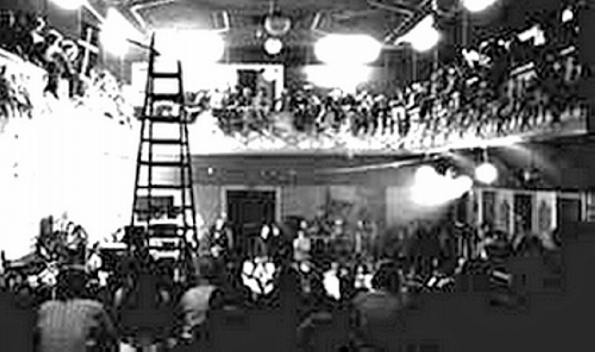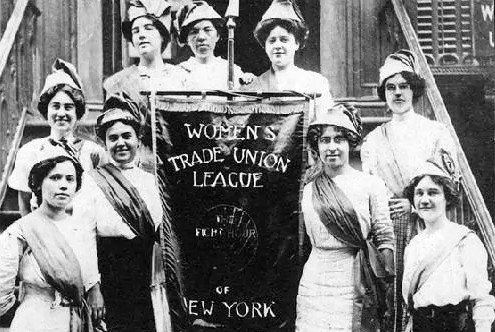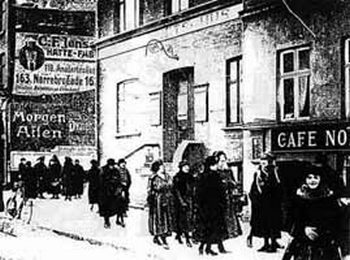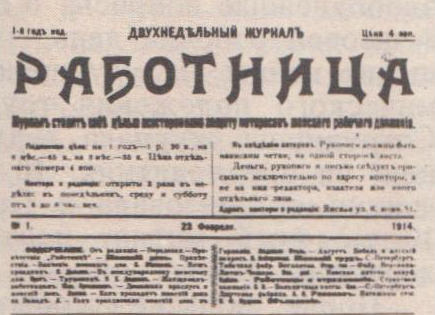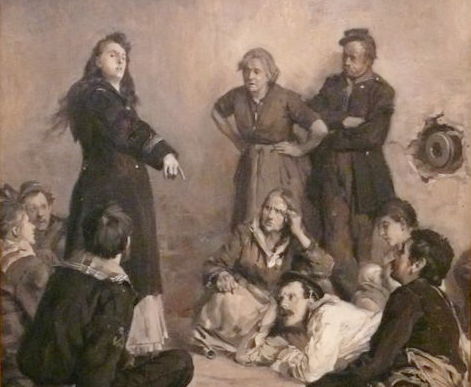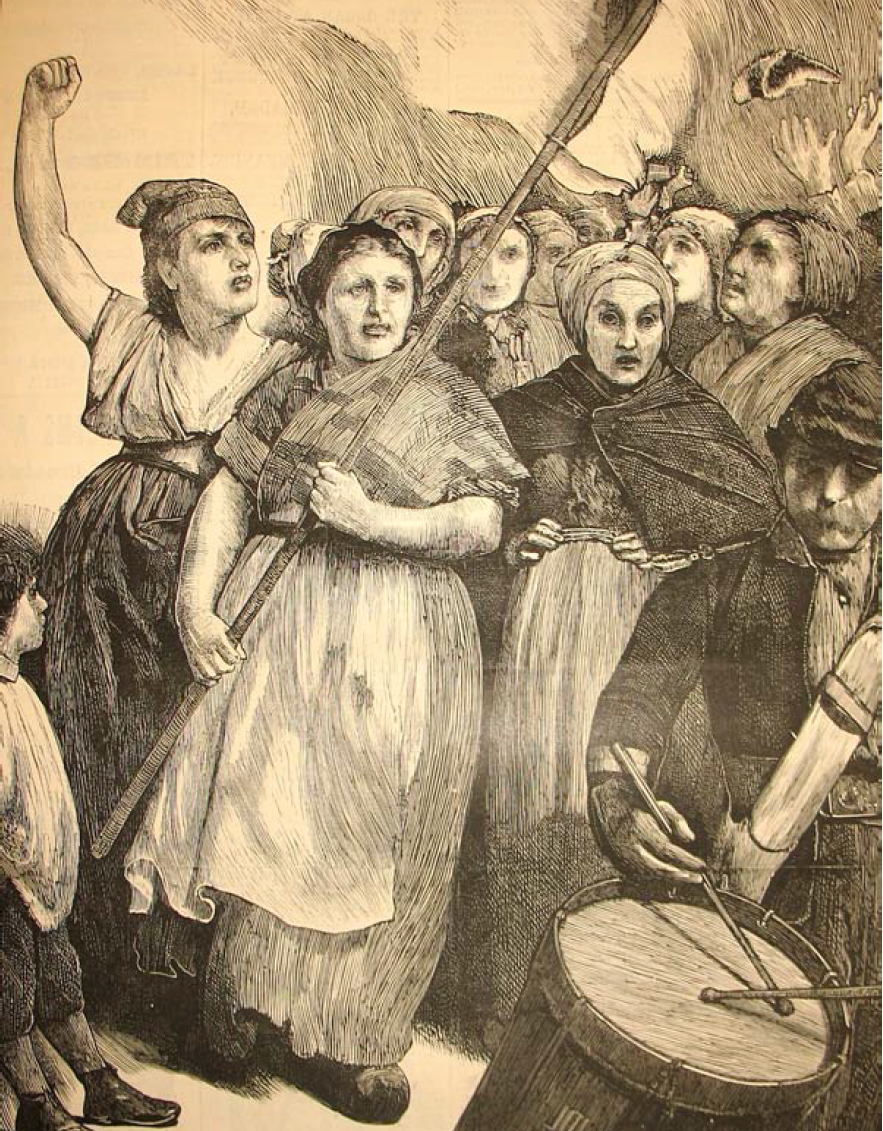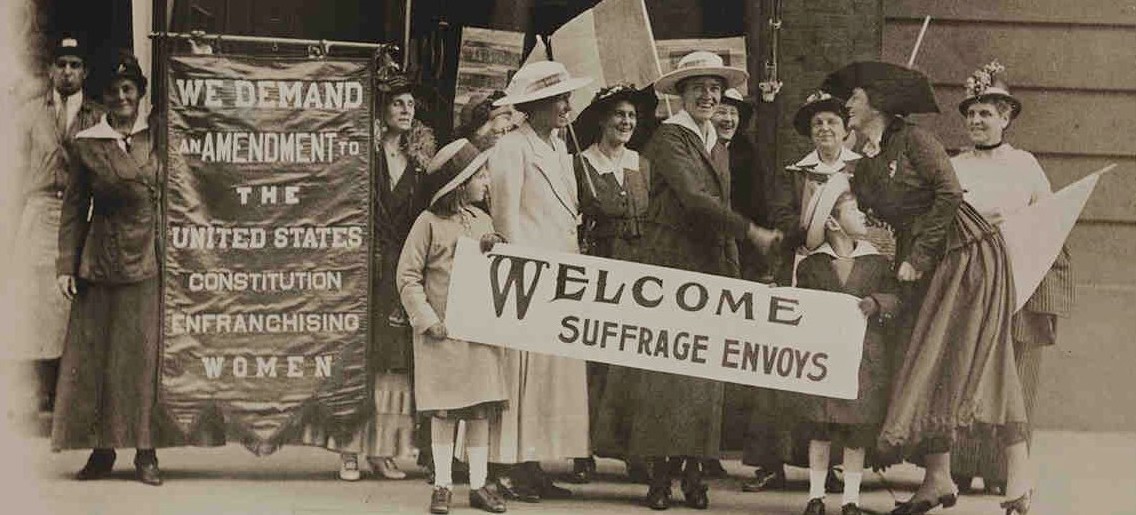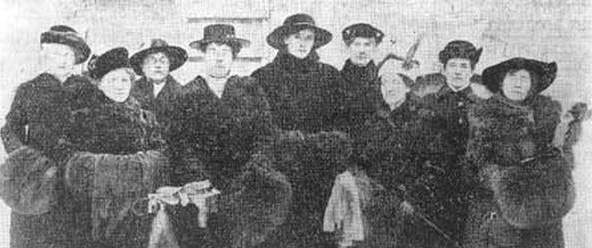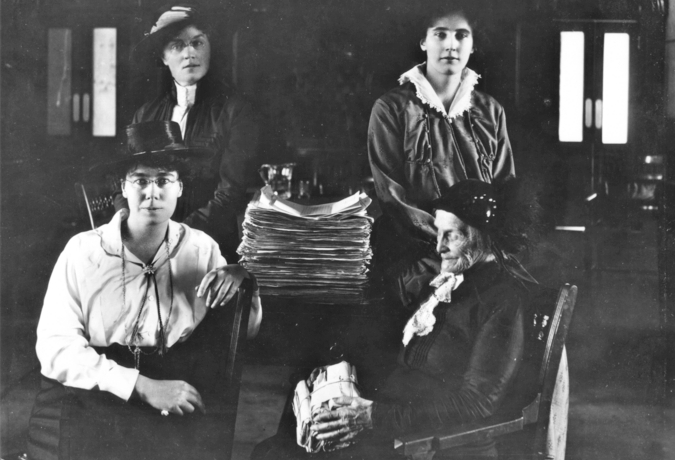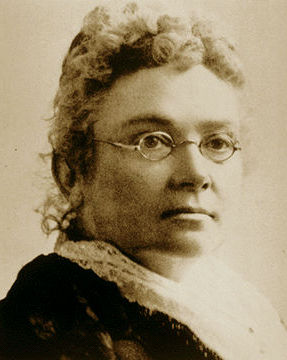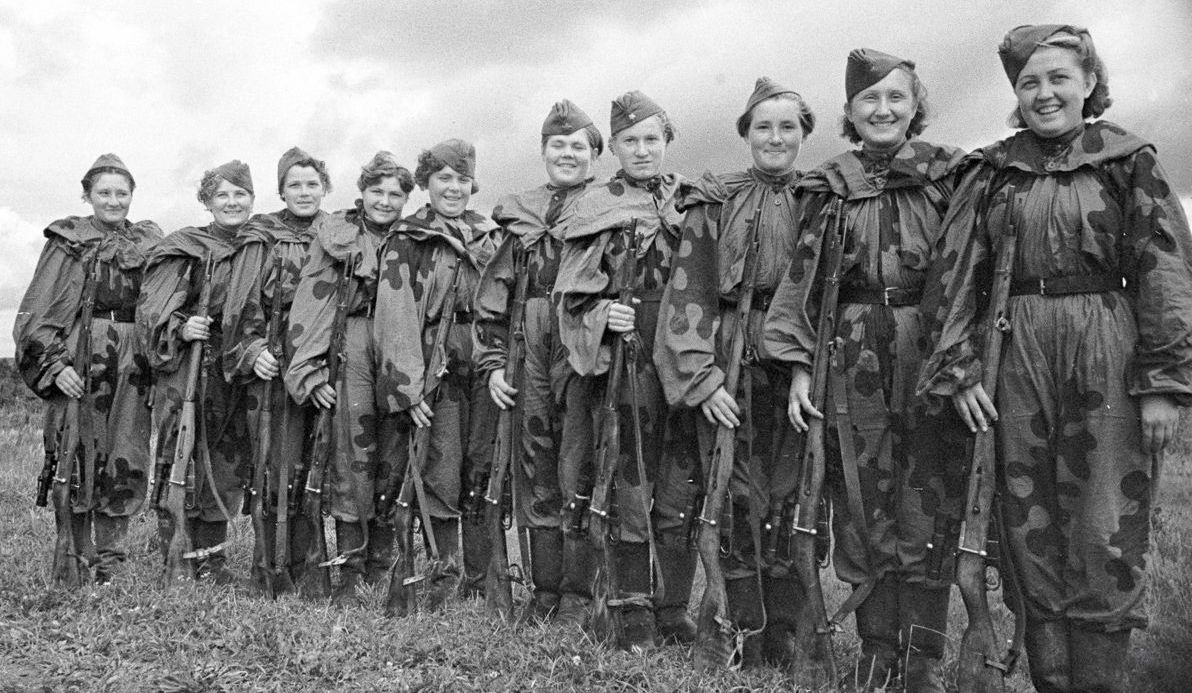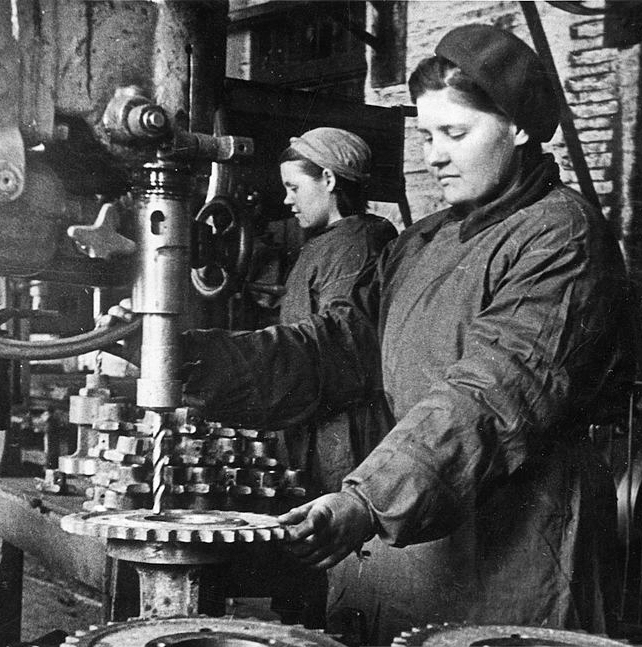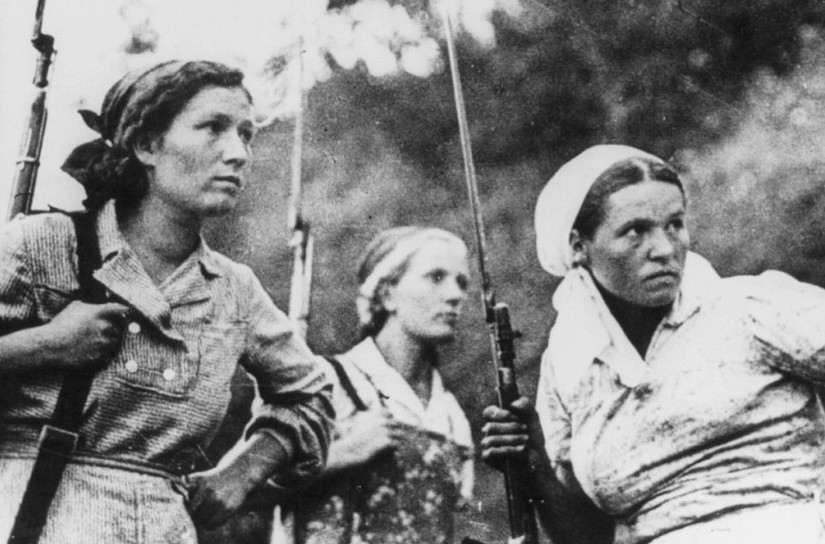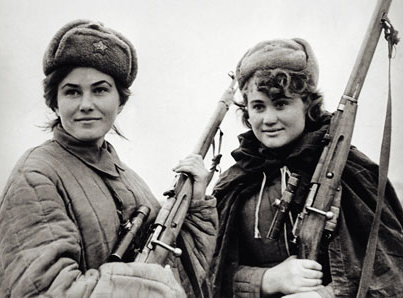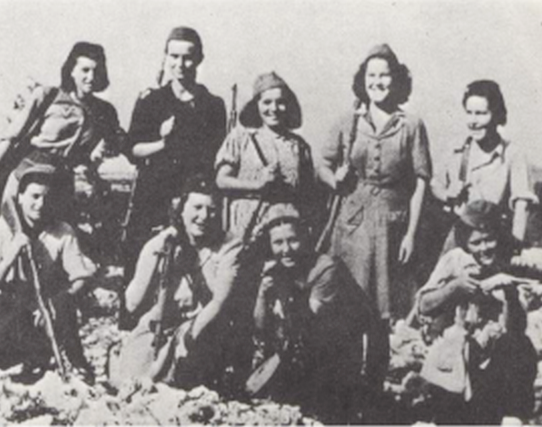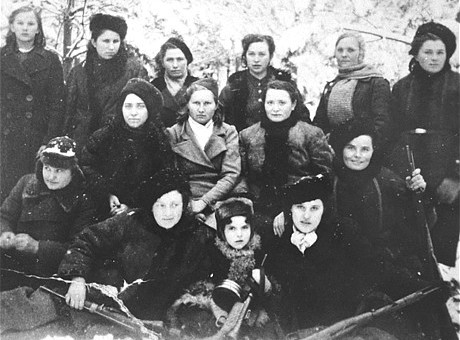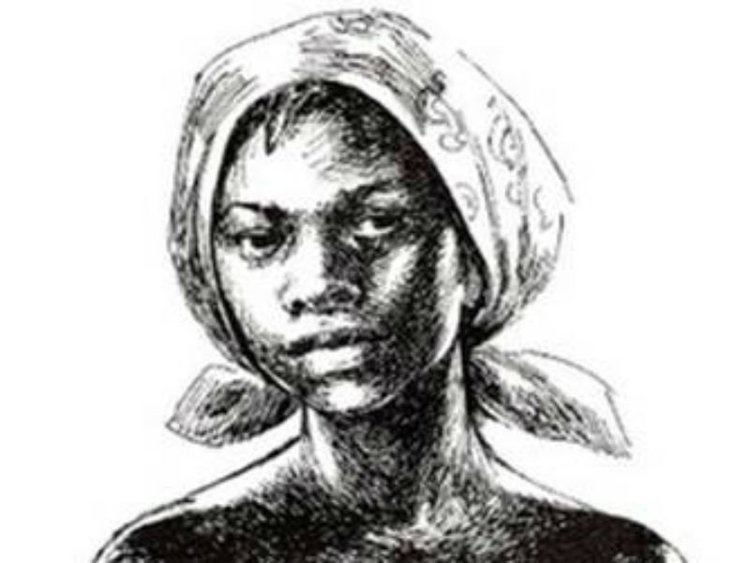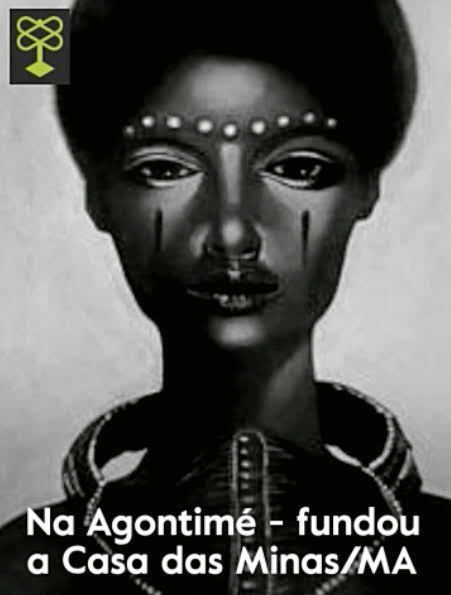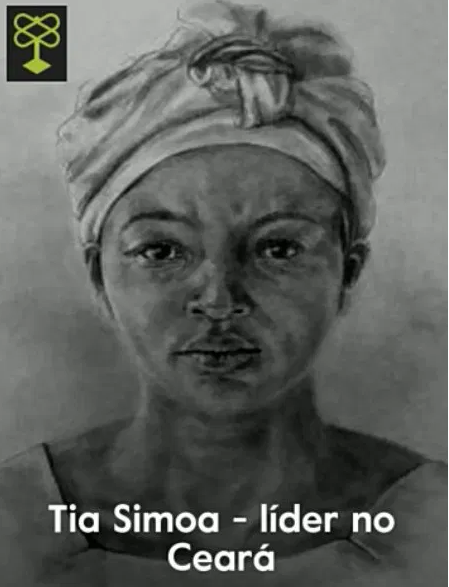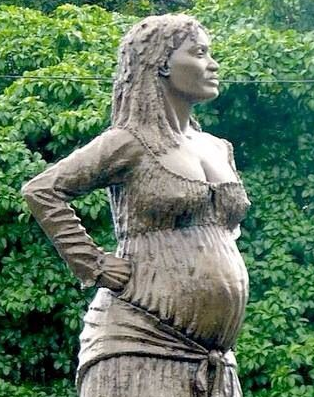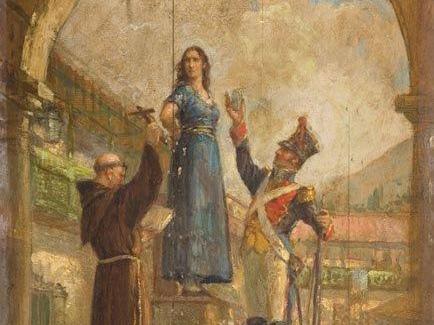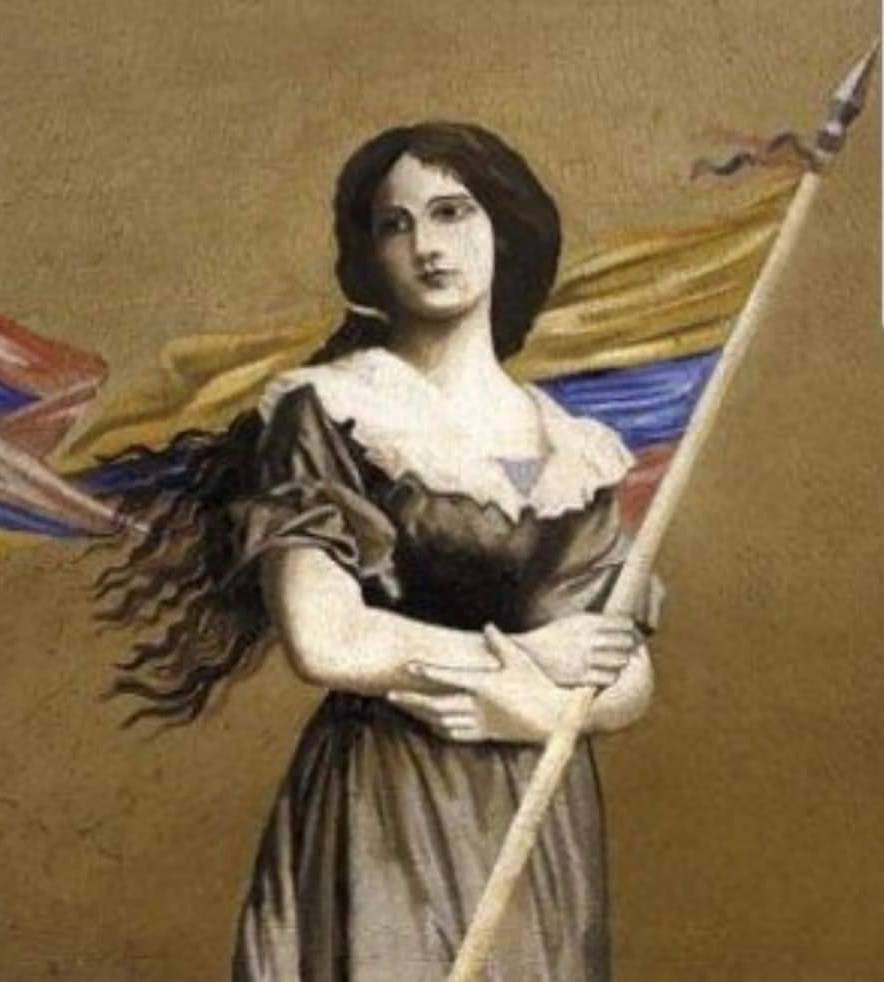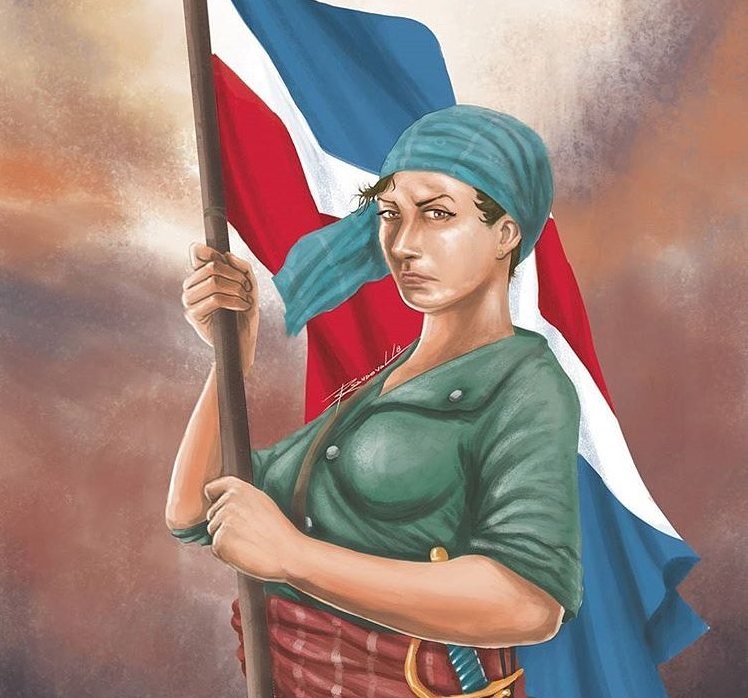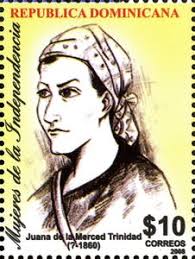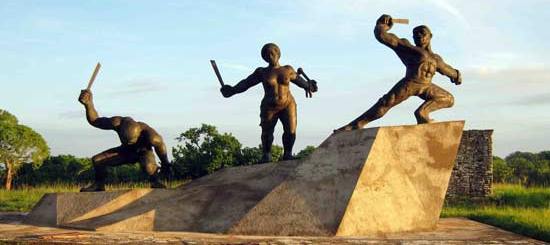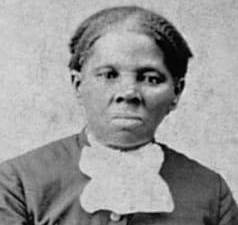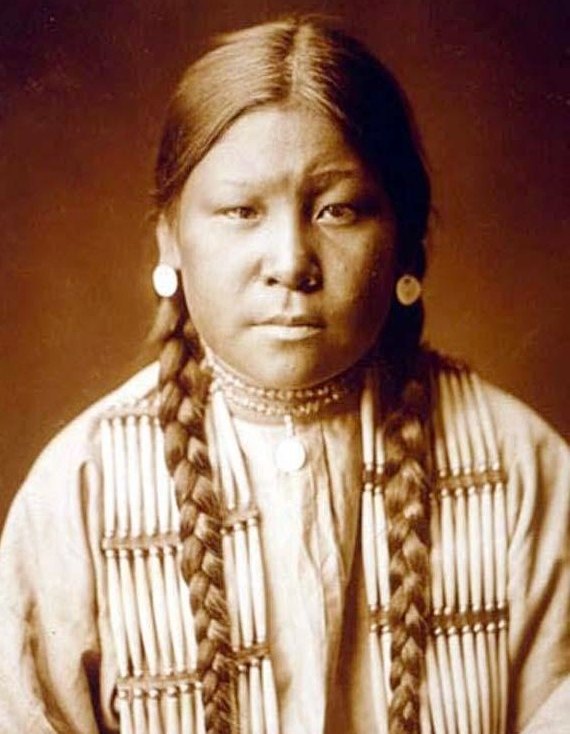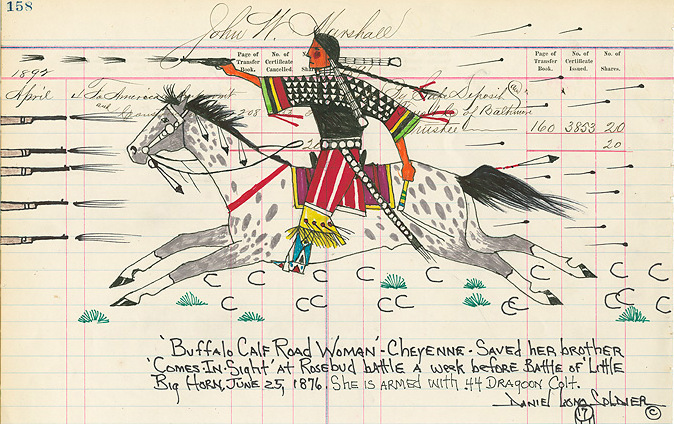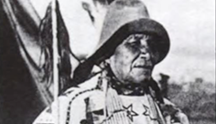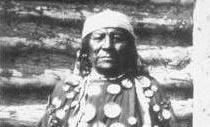
International Women's Day 2021 Women in
the Front Ranks of the Fight On the occasion of March 8, 2021, TML Monthly sends warmest militant greetings to all the women fighters in the ranks of the Communist Party of Canada (Marxist-Leninist) and to the women of Quebec, Canada and the world who are in the front ranks of every historic fight for peace, freedom and democracy. This is, essentially, a fight for the empowerment of the people, not the rich. Wherever the struggle to humanize the natural and social environment is being waged, women stand second to none. On this International Women's Day 2021, TML Monthly dedicates this supplement to the fighting women everywhere. Throughout the colonial, anti-slavery and anti-imperialist periods, women have always been at the forefront of historical battles. In each era, they have addressed the conditions they faced and led by example to oppose what blocked their affirmation and the birth of the New. Today, women are claiming their rights as women, as those who give birth to the future generation, and as workers, opposing all forms of exploitation and oppression, especially the exploitation and oppression of the most vulnerable, including migrant workers. Women are fighting as human beings, for the right to a livelihood at the standards a modern society requires, housing, health, education, and a guaranteed safe and decent retirement. Women are standing up as equal members of a body politic, affirming their right to participate and decide on all matters that concern them. This is what is necessary to exercise their humanity by participating in all aspects of life. Women around the world bear the brunt of the global neo-liberal anti-social, anti-national offensive, imperialist sanctions, aggressions and wars and are resisting and fighting to change the situation for the benefit of the people. The domination of the financial oligarchy does not allow women to affirm themselves and eliminate the obstacles and brutal violence that it imposes. Women demand that when they say No! their No! is effective and real. Each of these struggles highlights the conflict that exists between the women's movement and women's aspirations and the current political authority, and also highlights the urgent need for women to empower themselves so as to implement the solutions for which they are fighting. This is an historical turning point which women address every day and especially on March 8, International Women's Day. Using their words, their arguments, their denunciations and actions, women are demanding a change in the direction of the economy and democratic renewal. In this regard, the social consciousness of women plays a crucial role in advancing society's demands for peace, security, justice and the humanization of the natural and social environment. On the occasion of International Women's Day 2021, TML Monthly is publishing this supplement to highlight the heroic role of women in the fight of humanity for peace, freedom and democracy. Contrary to many official accounts that seek to marginalize women to secondary positions in these historic struggles for human progress, women have been, not "assistants," but courageous fighters in the front ranks of humanity's striving for empowerment. Origins of International Women's Day |
| |
1914: The first issue of Rabotnitsa (The Woman Worker), a journal for working class women, is published in Russia. The Bolshevik Central Committee creates a special committee to organize International Women's Day. Meetings are held in the factories and public places to discuss issues related to women's oppression and to elect representatives to carry forward the proposals from these meetings in the new committee.
1917: In Russia, International Women's Day is a time of intense struggle against the Czarist regime. Workers, including women workers in textile and metal-working industries, are on strike in the capital city St. Petersburg. On March 8 (February 23 on the Julian calendar), thousands of women factory workers in St. Petersburg strike for bread and peace. They demand, "Bread for our children" and "Return our husbands from the trenches." It marks the beginning of the February Revolution, leading to the abdication of the Czar and the establishment of a provisional government, which later makes the franchise universal and recognizes equal rights for women.
International
Women's Day 1917. Strike by thousands of women workers in St.
Petersburg for bread and peace
| |
1920: V.I. Lenin has
an important discussion with Clara Zetkin, which she recounts in the
pamphlet Lenin on the Women's Question, where he
sets out the necessity for "a powerful international women's movement,
[established] on a clear theoretical basis." He points out
that in organizing women:
"The inseparable
connection between the social and human position of the woman, and
private property in the means of production, must be strongly brought
out. That will draw a clear and ineradicable line of distinction
between our policy and feminism. And it will also supply the basis for
regarding the woman question as a part of the social question, of the
workers’ problem, and so bind it firmly to the proletarian
class struggle and the revolution. The communist women’s
movement must itself be a mass movement, a part of the general mass
movement. Not only of the proletariat, but of all the exploited and
oppressed, all the victims of capitalism or any other mastery. In that
lies its significance for the class struggles of the proletariat and
for its historical creation, communist society."
1921: March 8
becomes the official International Women's Day when Bulgarian women
attending the International Women's Secretariat of the Communist
International propose a motion that it be celebrated around the world
on this day. The date is chosen to honour the women in the Russian
Revolution, recognizing their role as a contribution to the struggle of
women for their emancipation internationally.
1928: The first
International Women's Day rally is held in Australia. It is organized
by communist women to demand an eight-hour work day, equal pay for
equal work, paid annual leave and a living wage for the unemployed.
1937:
Spanish women demonstrate against the fascist forces of General
Francisco Franco to mark International Women's Day.
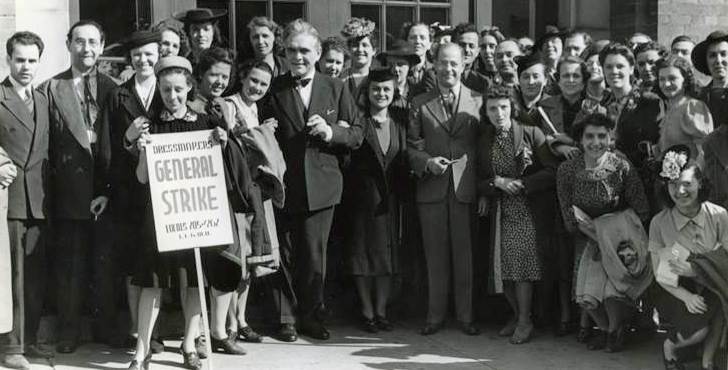
Strike by garment
workers in Montreal, 1937
1943: Italian women
mark International Women's Day with militant protests against fascist
dictator Benito Mussolini for sending their sons to die in World War II.
In this way, since 1911, International Women's Day has been
a day of celebration of women's fight for their rights and the rights
of all, and a day to militantly affirm the opposition of women to
imperialist war and aggression, and for the peoples' right to decide
their future. Its spirit has always been that to win the rights of
women and the fight for security and peace, women must put themselves
in the front ranks of these struggles and of governments which
represent these demands.
Contribution
of Women Advances the
Struggle for Empowerment
Struggle for Empowerment
Chartist
meeting in 1848 on Kennington Common
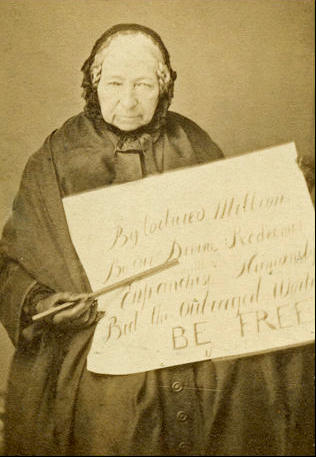
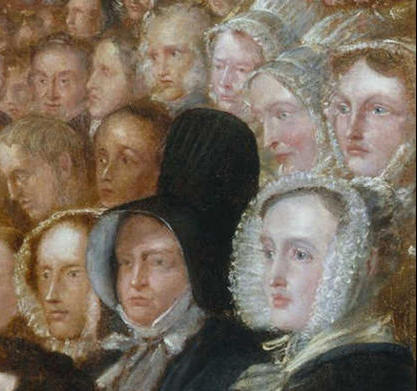

Anne Knight; 1840
world anti-slavery convention; Elizabeth Pease
1836: Chartism emerges as a working class movement in Britain to gain political rights and empower the working class, based on democratic principles, while also fighting corruption. While one of its main aims is universal suffrage for all men, irrespective of property ownership, women play a leading role. They include women well-known in the movement to abolish slavery in the British Empire, a number of them being Quakers. Many go on to become leaders in the movement for women's suffrage that develops in the late 19th century.
1871: Women play an outstanding role in establishing and defending the Paris Commune which is the first revolutionary seizure of state power by the proletariat and one of the most glorious pages in the history of the international working class. With the Union of Women as their leading organization, they organize working women at the barricades, ambulance stations and canteens. The Women's Union mobilizes them as well to fight for women's emancipation. Each district of Paris has Union committees for recruiting militant working women.
Nathalie Lemel, a member of the Union of Women, calls on women to join the work: "We have come to the supreme moment, when we must be able to die for our Nation. No more weakness! No more uncertainty! All women to arms! All women to duty! Versailles must be wiped out!"
Louise Michel (standing on left); drawing of women of the Paris Commune
Another outstanding woman fighter is Louise Michel of the Montmartre Vigilance Committee, who is elected its president. The committee holds workshops, recruits ambulance nurses, gives aid to wives of soldiers, sends speakers to the clubs, and more. She serves as a fighter and medical worker in the 61st Battalion of Montmartre.
1904: The
International Woman Suffrage Alliance is founded in Berlin. By this
time, women have already been fighting for the universal right to vote
for decades, in concert with affirming their role in all the important
issues of the day, such as the abolition of slavery and the defence of
workers' rights. Women of property are permitted to vote on the Isle of
Man in 1881. Women in the then-British colony of New Zealand win the
right to vote in 1893. In Australia, women progressively gain the right
to vote between 1894 and 1911. In Britain and Germany women
can vote by 1918; Austria and the Netherlands by 1919; and the
United States in 1920.
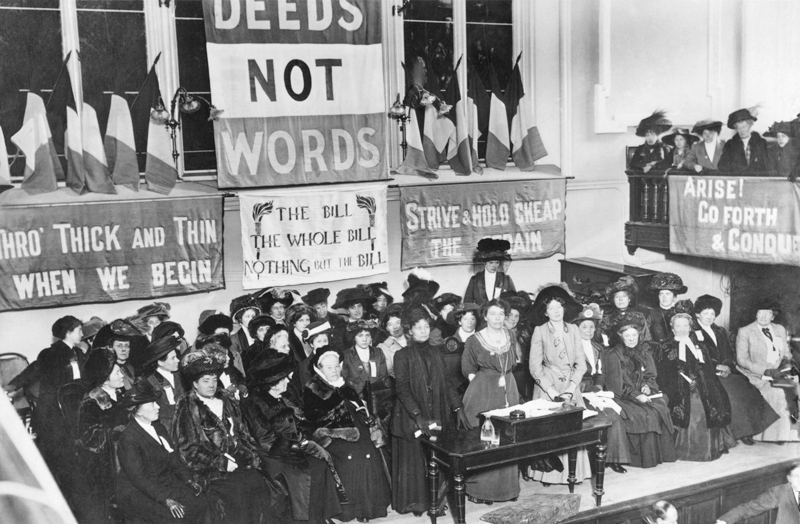
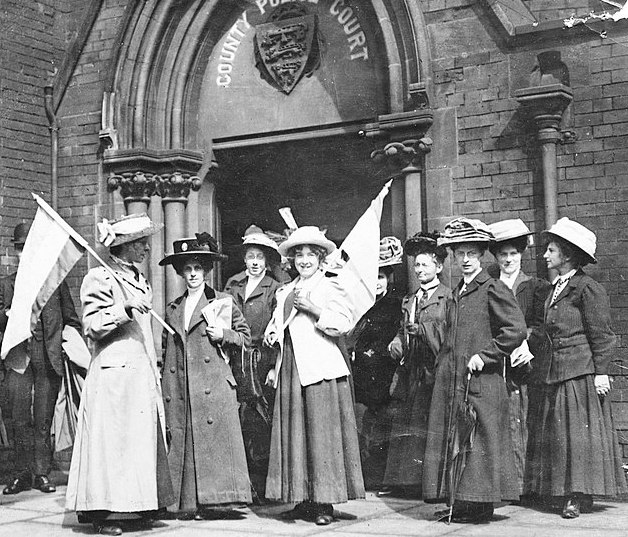
1908.
Meeting of suffragettes in England; 1911. Demonstration outside police
court.
Suffrage movement in the U.S.
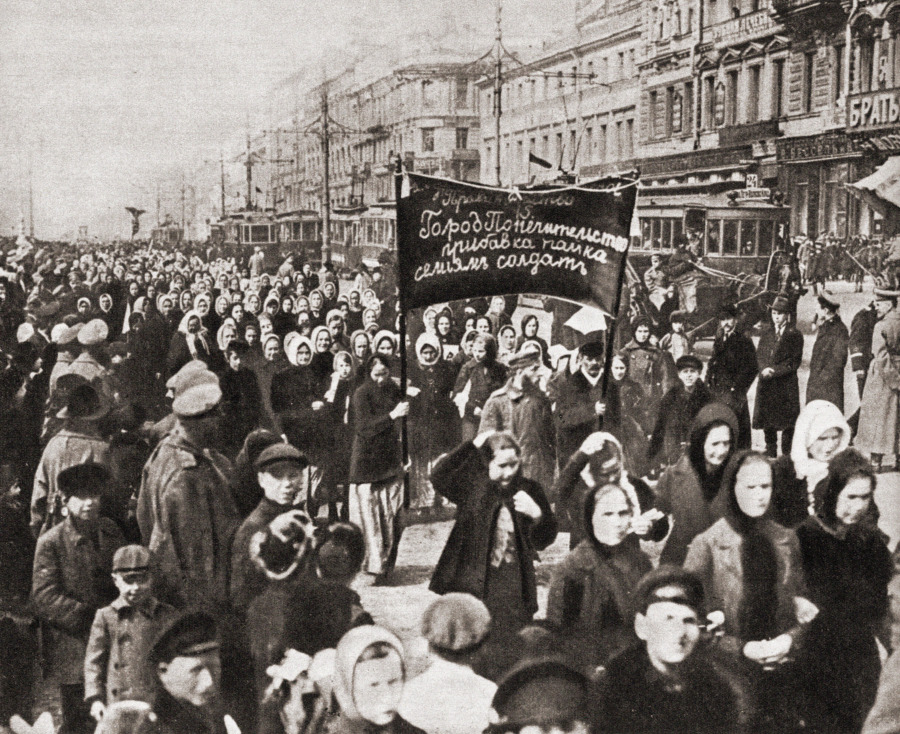
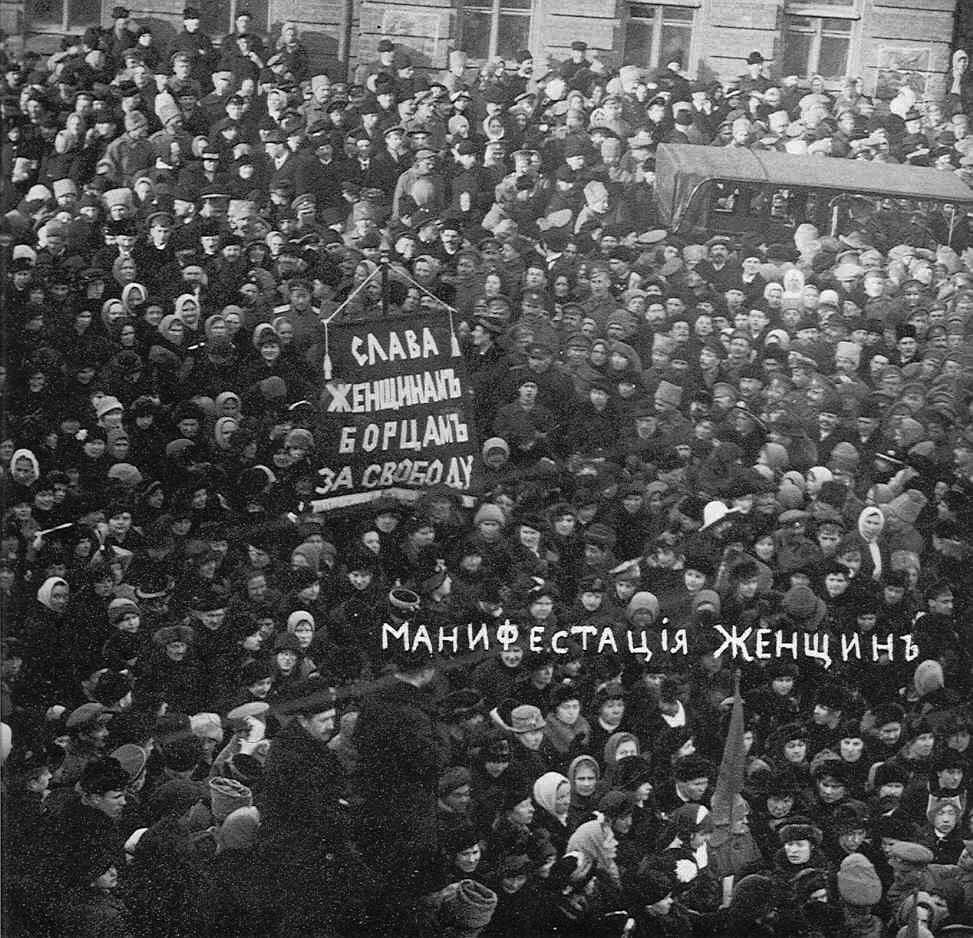
On
International Women's Day 1917, thousands of women factory workers in
St. Petersburg strike for bread and peace leading to the Great October
Revolution eight months later. After the October revolution,
in addition to establishing universal suffrage, all political and other
arrangements are put in place to enable women's full participation in
social, cultural
and political life.
Women's Fight for the Vote in Canada

Women from Manitoba,
Saskatchewan, and Alberta won the right to vote provincially in 1916,
before the eastern provinces.
Across the country, the recognition of rights has always been a fight against propertied interests which do not see themselves served by the empowerment of the people. Rights are not recognized by virtue of the recognition that all members of the polity are equal and are entitled by right to participate in governing the society they depend on for their living. On the contrary, language is about the Crown "granting" this or that as if rights are manna which falls from the sky.
Underscoring the fact that in Canada rights are linked to property ownership and property relations, property-owning widows and spinsters in Quebec and Ontario were permitted to vote at the municipal level as of 1884. So too in New Brunswick, at the municipal level the franchise was extended as of 1886 to all property-owning women "unless their husbands were voters." In Nova Scotia women won the right to vote at the municipal level in 1886 and in Prince Edward Island property-owning widows and spinsters won this right in 1888.
Provincially, in Manitoba, Saskatchewan and Alberta, women had already won the suffrage in 1916. They formed organizations which, while their main objective was to organize for women's suffrage, also took up social and educational issues including demanding improvements in the conditions in the factories, especially those faced by women factory workers.
January 1916. Newspaper photo of executive members of the Women's Equality League following the passage of the suffrage bill in the Manitoba legislature
Writing about the activities of the Political Equality League (PEL) which was active between 1912 and 1916, formed first in Manitoba and then in other prairie provinces, Linda McDowell from the Nellie McClung Foundation in Winnipeg writes:
"Lack of money was a problem at the beginning because the League needed to be able to provide speakers to take their message to the small towns and farms of Manitoba as well as to the Winnipeg audience. Mrs. Hample provided some initial funding. Later they raised money by selling memberships and, when Nellie McClung joined them, she suggested that she could add a lecture on woman suffrage to her already successful public readings of her books. She charged 25 cents a head and was able to pay her own expenses that way. Nellie was extremely popular, with a record 100 readings in Manitoba in 1911 and she could get as many as 3 000 people out in Brandon. The League's most famous activity, the Women's Parliament of 1914, provided funding for most of the rest of their campaign.
"The Political Equality League speakers often inspired communities such as Carberry or Portage la Prairie (or Moosomin, Saskatchewan) to set up their own Political Equality Leagues, affiliated with the Winnipeg group. The Roaring River Suffrage Association had been set up independently by the Twilley sisters and their friends, but they also worked with the Winnipeg League. The Icelandic suffrage groups were not affiliated with the English groups but they kept in touch and usually joined the Political League in petitions and making presentations to the Premier.
"The League had a number of good ideas
to get citizens involved in their campaign. Their Speakers' Bureau
included PEL members such as Mrs. A.V. Thomas, Miss Francis Beynon,
Miss Winona Flett (who married Fred Dixon in 1914), and Mrs. Nellie
McClung. The journalist members constantly wrote articles for the
newspapers and Francis Marion Beynon wrote about suffrage and women's
rights in her regular "Women's Page" in The Grain Growers'
Guide. Mrs. Thomas used her newspaper column and the
Homemaker's Clubs she organized across the Prairies to carry the
message as well. In 1913 the League ordered one hundred "Votes for
Women" banners which were placed on Winnipeg streetcars. In 1913 they
also had a booth at the Winnipeg Stampede and handed out pamphlets. It
was a great advantage that the Stampede program included so many women
performers -- roping and riding champions! The Women's Parliament of
1914 was the League's most successful activity. Not only did it make
money but woman suffrage suddenly became very respectable and everyone
wanted to get involved."
Women in Winnipeg with Women's Political Equality League petitions; Emily Howard Stowe, founder of the Canadian Women's Suffrage Association
By the close of 1922, women had won full suffrage in all the provinces except Quebec. Newfoundland, at that time a separate country, finally recognized women's right to vote in 1925.

Council of the Quebec
suffrage organization, Ligue des droits de la femme
In Quebec, women continued to wage militant struggles against being treated by the Church and governments as the property of their spouses without whose permission they could not even have a bank account or act in their own name in any way. They finally won the franchise in 1940.
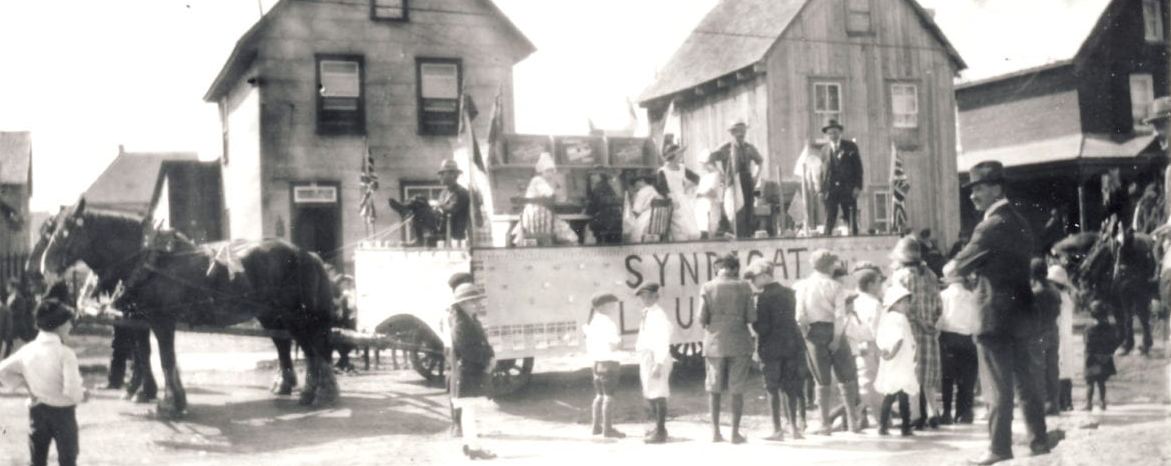
Strike by the women
factory workers at the Eddy Match Company in Hull, Quebec, 1919
During this period, women also stood second to none in the fights of the workers across the country for the recognition of their demands for an eight-hour day, decent pay and working conditions.
As concerns the right to vote in federal or provincial elections, no person of what was called "oriental" origin was permitted to vote let alone hold office until after World War II in 1948. Inuit were not permitted to vote until 1950 and the other Indigenous nations were only recognized as citizens if they gave up their treaty status. Not until 1960 were Indigenous men and women permitted to vote in a federal election without forsaking treaty rights.

Irene
Parlby, Louise McKinney, Nellie McClung, Henrieta Muir Edwards and
Emily Murphy, known as the "Famous Five," win in 1929 a
court case they initiate to have women legally recognized as
persons in Canada
Women Fighters Against Fascism
in the
Spanish Civil War and World War II

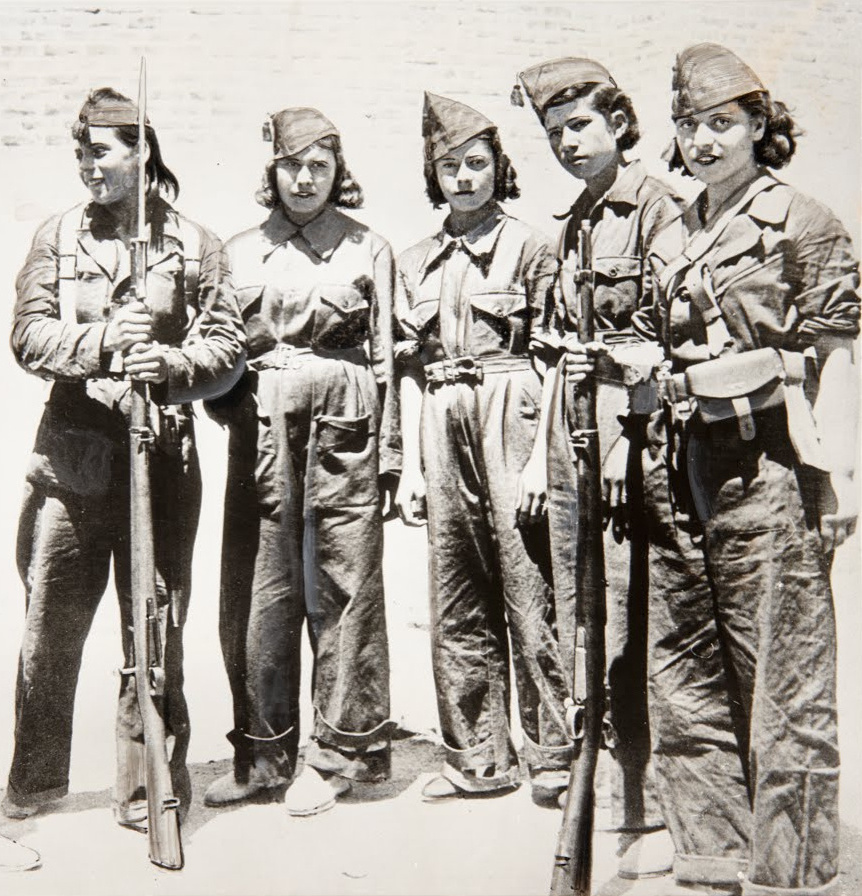
Women
made outstanding contributions on the Republican side during the
Spanish civil war.
1936-1945: Women make outstanding contributions to the Republican side during the Spanish Civil War (1936-39) and to defeating Nazi fascism in the Second World War (1939-45). Women from virtually all the countries of Europe and Eurasia, joined by women from all the Americas, play vital roles as spies, couriers, wireless operators, grenade and bomb makers, medics, rescuers, saboteurs, guerrilla fighters, regular soldiers, snipers and pilots. Many undergo torture without ever giving up any information. Many are executed -- by hanging, the guillotine, firing squad or the bullets of a single executioner, in the Nazi crematoriums, through beatings or the harsh conditions of Nazi prison camps.
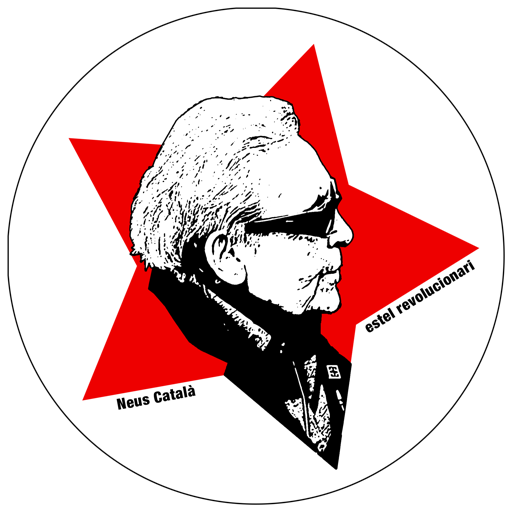

Neus
Català is a Catalonian woman and a communist who, when
Franco's troops invade Barcelona in 1939, leads 200 orphans of the
Spanish civil war across the snow-covered Pyrenees mountains to France.
She then stays in France to fight Nazi fascism during World War II with
the French resistance. She is eventually captured by the Germans and
deported to the Ravensbrück concentration camp for women and
then to a slave labour camp where she and her coworkers sabotage the
bullets and bombs they are forced to produce in a munitions factory.
She later writes in a memoir, “We women were not assistants,
we were fighters.” Neus Català died on April 13,
2019 at 103 years of age.
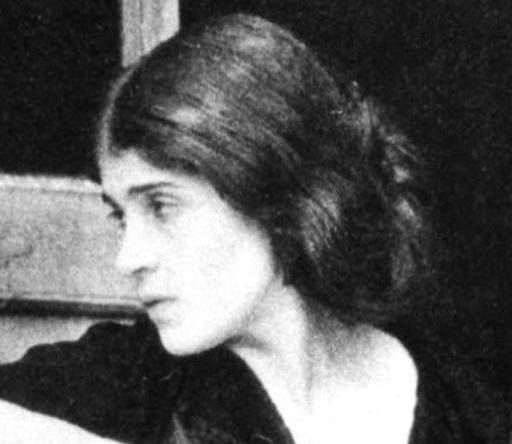 Assunta Adelaide Luigia Modotti
Mondini, known as "Tina Modotti," born in Udine, Friuli-Venezia Giulia
region, Italy in 1896 is a photographer and a revolutionary communist
who contributes to the fight against fascism, working with
International Red Aid (SRI). Using different pseudonyms, she
travels to countries under fascist rule to assist the families of
political prisoners. During the Spanish Civil War she organizes the
evacuation to Mexico and the Soviet Union of children orphaned by the
war. In 1939, when Barcelona is occupied by Franco’s fascist
forces she manages to flee to Mexico, continuing her work there with
refugees of the Spanish civil war. She dies there in 1942.
Assunta Adelaide Luigia Modotti
Mondini, known as "Tina Modotti," born in Udine, Friuli-Venezia Giulia
region, Italy in 1896 is a photographer and a revolutionary communist
who contributes to the fight against fascism, working with
International Red Aid (SRI). Using different pseudonyms, she
travels to countries under fascist rule to assist the families of
political prisoners. During the Spanish Civil War she organizes the
evacuation to Mexico and the Soviet Union of children orphaned by the
war. In 1939, when Barcelona is occupied by Franco’s fascist
forces she manages to flee to Mexico, continuing her work there with
refugees of the Spanish civil war. She dies there in 1942.
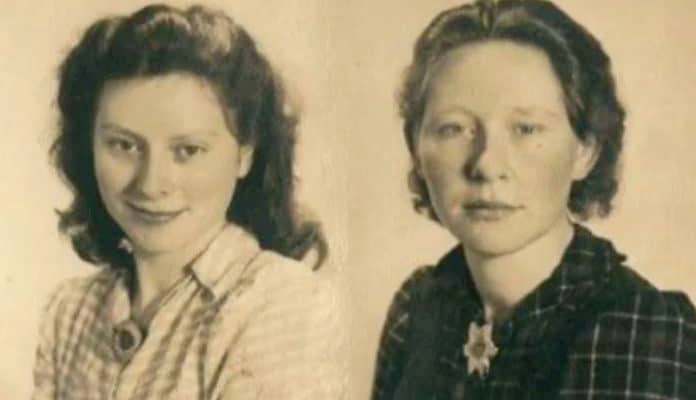 In Holland,
following the nazi invasion of the country in 1940, the young
sisters Freddie and Truus Oversteegen join their mother, a communist,
in distributing illegal newspapers and pamphlets for the Dutch
resistance. Freddie is 14 at the time and Truus is 16. By 1941 the
teenagers begin taking on more dangerous missions: smuggling Jewish
children out of the country, blowing up bridges and railroad tracks,
and luring, ambushing and killing German Nazis and their Dutch
collaborators.
In Holland,
following the nazi invasion of the country in 1940, the young
sisters Freddie and Truus Oversteegen join their mother, a communist,
in distributing illegal newspapers and pamphlets for the Dutch
resistance. Freddie is 14 at the time and Truus is 16. By 1941 the
teenagers begin taking on more dangerous missions: smuggling Jewish
children out of the country, blowing up bridges and railroad tracks,
and luring, ambushing and killing German Nazis and their Dutch
collaborators.
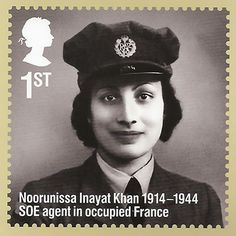 From
a Patriotic
Indian family, Noor Inayat Khan is born in 1914 in Moscow, and grows up
in France. Her great-great-great-grandfather Tipu Sultan died fighting
against British rule in India in 1799. Her family moves to Britain in
1940. Wanting to contribute to defeating Hitler fascism, Khan joins the
Women’s Auxiliary Air Force in Britain and receives wireless
training, but not before being questioned by her recruiting officers
whether her loyalty to Britain could be trusted. Khan replied that as
long as the war with Germany was on she would be loyal to the British
government and Crown, but after the war she might have to reconsider
her position and support India in its fight for independenceagainst Britain. In 1943 she is inserted into Nazi-occupied France to work as a
British secret agent with the Prosper Network of the French
Résistance. The network is heavily infiltrated, however,
resulting in most of its members being arrested. A posthumous citation
for her moral and physical courage says Khan "refused … to
abandon what had become the principal and most dangerous post in
France, although given the opportunity to return to England, because
she did not wish to leave her French comrades without communications
and she hoped also to rebuild her group." Within a few months Khan is
betrayed and taken prisoner by the Gestapo. Subjected to rough
interrogation she gives only false information. She is then sent to a
prison camp in Germany and eventually to Dachau where she and three
other women agents are executed in September 1944. Khan’s last utterance before being shot is
“Liberté!”
From
a Patriotic
Indian family, Noor Inayat Khan is born in 1914 in Moscow, and grows up
in France. Her great-great-great-grandfather Tipu Sultan died fighting
against British rule in India in 1799. Her family moves to Britain in
1940. Wanting to contribute to defeating Hitler fascism, Khan joins the
Women’s Auxiliary Air Force in Britain and receives wireless
training, but not before being questioned by her recruiting officers
whether her loyalty to Britain could be trusted. Khan replied that as
long as the war with Germany was on she would be loyal to the British
government and Crown, but after the war she might have to reconsider
her position and support India in its fight for independenceagainst Britain. In 1943 she is inserted into Nazi-occupied France to work as a
British secret agent with the Prosper Network of the French
Résistance. The network is heavily infiltrated, however,
resulting in most of its members being arrested. A posthumous citation
for her moral and physical courage says Khan "refused … to
abandon what had become the principal and most dangerous post in
France, although given the opportunity to return to England, because
she did not wish to leave her French comrades without communications
and she hoped also to rebuild her group." Within a few months Khan is
betrayed and taken prisoner by the Gestapo. Subjected to rough
interrogation she gives only false information. She is then sent to a
prison camp in Germany and eventually to Dachau where she and three
other women agents are executed in September 1944. Khan’s last utterance before being shot is
“Liberté!”
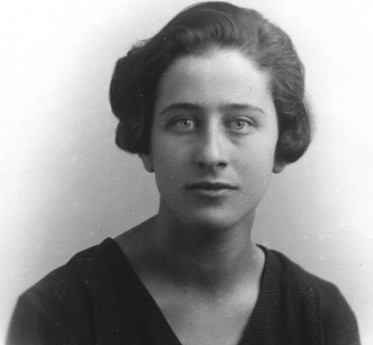 Olga
Benário Prestes is born in 1908 to a Jewish family in
Munich. At 15, she begins working with the underground German Communist
Youth Organization. Following her arrest on charges of "preparations
for high treason" and helping break a comrade out of jail, she flees
Germany for the Soviet Union where she receives military and strategic
training. In 1934, she is tasked with accompanying and providing
security for Brazilian communist Luis Carlos Prestes on his return to
Brazil from exile. They arrive in Rio de Janeiro in the midst of an
uprising against dictator Getulio Vargas, which the Communist Party is
supporting. Benário and Prestes are arrested and in
September 1936 she is extradited to Nazi Germany. In
Ravensbrück prison camp she continues her revolutionary
anti-fascist work in a clandestine Communist prisoners’
network. In 1942 she is sent to the gas chamber along with hundreds of
other political prisoners.
Olga
Benário Prestes is born in 1908 to a Jewish family in
Munich. At 15, she begins working with the underground German Communist
Youth Organization. Following her arrest on charges of "preparations
for high treason" and helping break a comrade out of jail, she flees
Germany for the Soviet Union where she receives military and strategic
training. In 1934, she is tasked with accompanying and providing
security for Brazilian communist Luis Carlos Prestes on his return to
Brazil from exile. They arrive in Rio de Janeiro in the midst of an
uprising against dictator Getulio Vargas, which the Communist Party is
supporting. Benário and Prestes are arrested and in
September 1936 she is extradited to Nazi Germany. In
Ravensbrück prison camp she continues her revolutionary
anti-fascist work in a clandestine Communist prisoners’
network. In 1942 she is sent to the gas chamber along with hundreds of
other political prisoners.
In the Soviet Union, 800,000 women go directly to the Eastern Front during the Great Patriotic War, as the Second World War is known. They serve as regular troops in the Red Army and in other combat capacities.
Red
Army women snipers prepare to deploy to the front; women production
workers at Stalingrad tractor factory
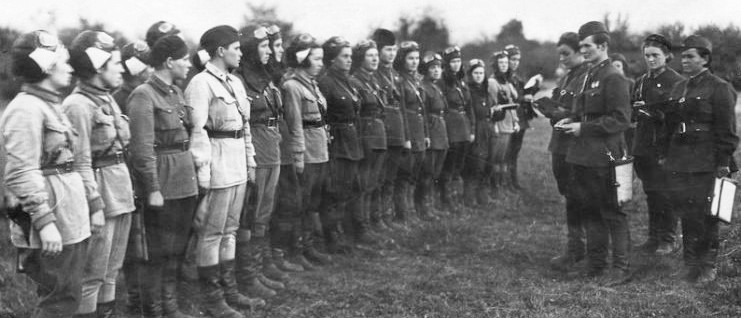
Red Army 588th night
bomber regiment
 Two Ukrainian
women who distinguish themselves are sniper Lyudmila Pavlichenko, who
records 309 enemy kills, and pilot Nadezhda Popova, a member of the
feared night bomber squadron the Germans call "Night Witches." Popova
flies 852 dangerous low-altitude missions in an old plywood biplane and
survives being shot down numerous times.
Two Ukrainian
women who distinguish themselves are sniper Lyudmila Pavlichenko, who
records 309 enemy kills, and pilot Nadezhda Popova, a member of the
feared night bomber squadron the Germans call "Night Witches." Popova
flies 852 dangerous low-altitude missions in an old plywood biplane and
survives being shot down numerous times.
A fourth-year history student at the Kyiv University, Pavlichenko immediately joins up when Germany begins its invasion of the Soviet Union in June 1941. Pavlichenko is among the first round of volunteers at the recruiting office, where she requests to join the army instead of becoming a nurse. Trained as a sniper, she fights in defence of Odessa and then Sevastopol on the Crimean Peninsula. After being wounded in action in June 1942, Pavlichenko is sent to Canada and the United States for a publicity visit and becomes the first Soviet citizen to be received by a U.S. President when Franklin Roosevelt welcomes her to the White House. Pavlichenko is later invited by Eleanor Roosevelt to tour America relating her experiences. In Chicago, she stands before large crowds, urging the United States to support the second front.
"Gentlemen," she says, "I am 25 years old and I have killed 309 fascist occupants by now. Don't you think, gentlemen, that you have been hiding behind my back for too long?" Her words settle on the crowd, then cause a surging roar of support. The United States gives her a Colt semi-automatic pistol.
In Canada she is presented with a sighted Winchester rifle, now on display at the Central Armed Forces Museum in Moscow. Pavlichenko along with Vladimir Pchelintsev (fellow sniper) and Nikolai Krasavchenko (Moscow fuel commissioner) are greeted by thousands of people at Toronto's Union Station.
Having attained the rank of major, Pavlichenko becomes an instructor and trains Soviet snipers until the war's end. In 1943, she is awarded the Gold Star of the Hero of the Soviet Union, and is commemorated on a Soviet postage stamp.
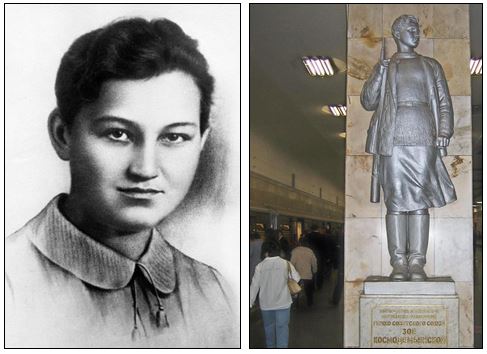

Zoya
Kosmodemyanskaya defiantly faced her executioners
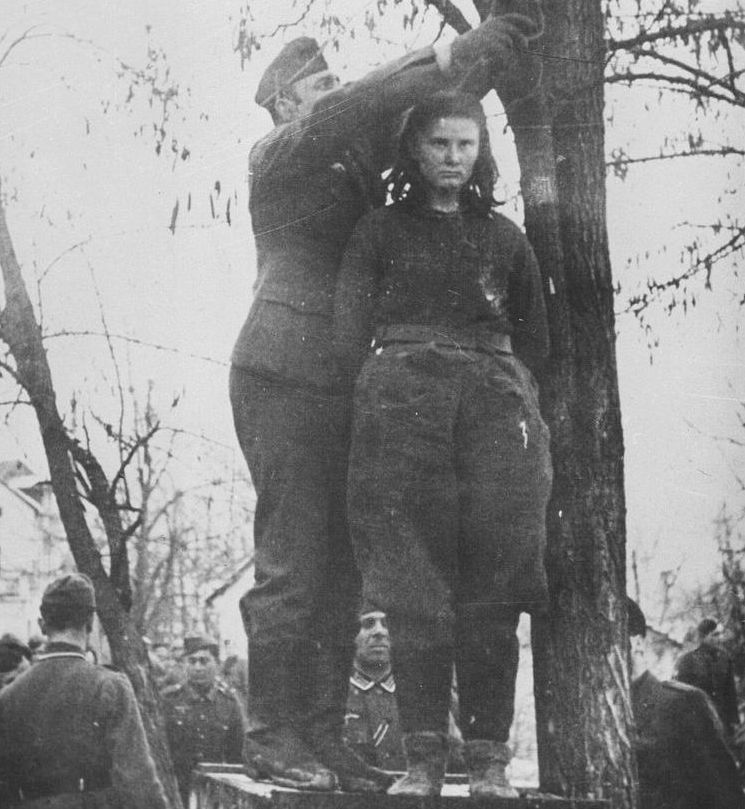 In 1943,
17-year-old Lepa Radić, a Bosnian Serb communist and member of the
Yugoslav Partisans, is captured while protecting women and children
escaping Nazi forces by firing a barrage of ammunition at advancing SS
troops. She is hanged after being tortured and revealing nothing. On
the gallows she entreats her people to fight for their freedom and not
to surrender. When offered a last minute pardon if she will reveal the
names of her comrades and leaders, Radić replies that she is not a
traitor to her people and her comrades will reveal themselves when they
avenge her death.
In 1943,
17-year-old Lepa Radić, a Bosnian Serb communist and member of the
Yugoslav Partisans, is captured while protecting women and children
escaping Nazi forces by firing a barrage of ammunition at advancing SS
troops. She is hanged after being tortured and revealing nothing. On
the gallows she entreats her people to fight for their freedom and not
to surrender. When offered a last minute pardon if she will reveal the
names of her comrades and leaders, Radić replies that she is not a
traitor to her people and her comrades will reveal themselves when they
avenge her death.
Other women, like Mala Zimetbaum, a Jew from Belgium, also face their executioners with similar taunts and acts of defiance. Mala was the first woman to escape from Auschwitz-Birkenau prison camp but was caught and executed.
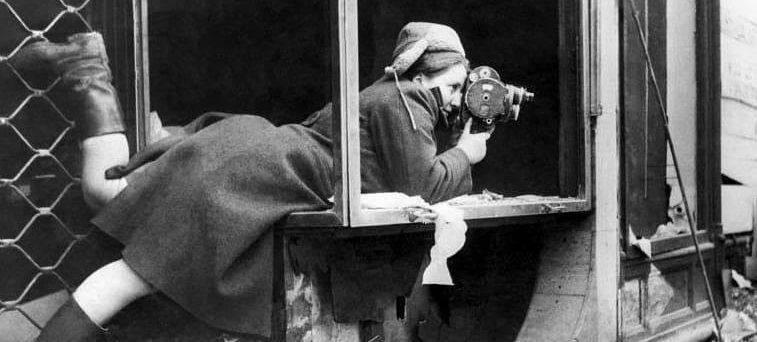
Red Army cinematographer
Ottilia Reizman.
February 10, 1945 -- Red Army cinematographer Ottilia Reizman is filming street fighting in Budapest. Before 1944 she worked in Belarus partisans' detachments. Her work provided footage of the partisans of Belarus.
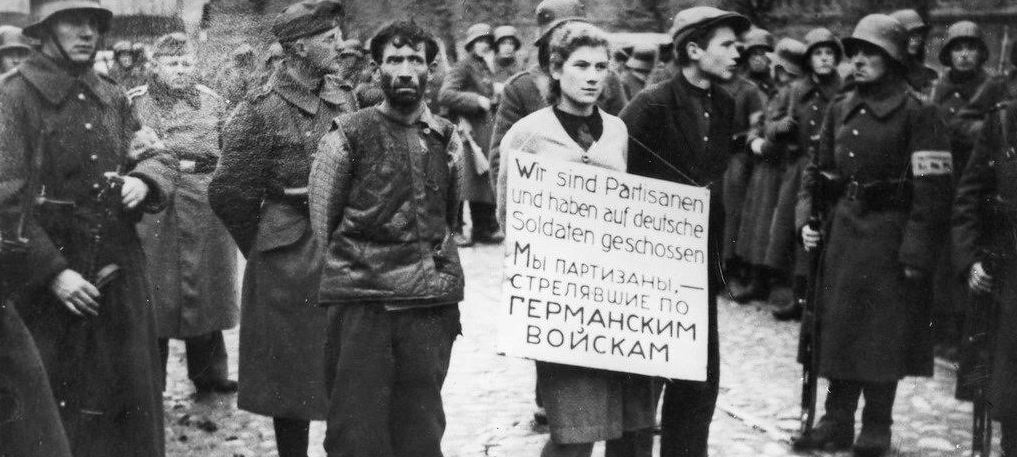
October 26, 1941. Maria
Bruskina, anti-fascist resistance fighter in Belarus was captured and
executed by the Nazis, remaining defiant to the end.
Maria Bruskina, a 17-year-old Jewish girl, daughter of renowned sculptor from Minsk, Belarus, helps Red Army POWs to flee from concentration camps, forges documents for them and supplies the prisoners with food and clothing. In October 1941 she establishes contacts with other anti-fascist resistance fighters in the city. They organize the escape of several captured Red Army POWs but are betrayed to the Nazis. The group is arrested and publicly hanged in Minsk. All of them are 16 to 21 years old.
December
1941. Execution of Alexandra Pavlovska-Afinogenova and Maria Sakharova
in Finland.
Alexandra Pavlovska-Afinogenova and Maria Sakharova are two anti-fascist fighters in Karelia. They organized anti-fascist resistance groups in the town of Medvezhiegorsk and were executed by Finnish troops in December 1941.

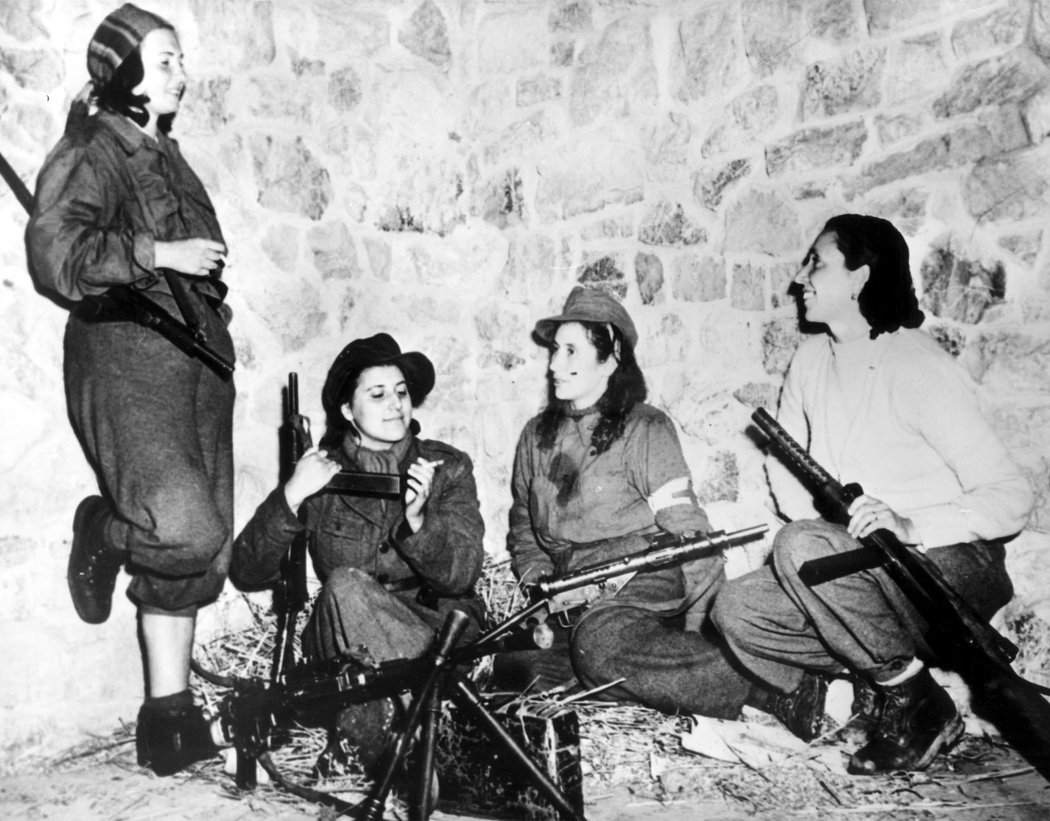
Partisan fighters in Ukraine, Russia, Poland, Belarus,
Yugoslavia and Italy
Heroines of the Americas to
the End
of the 19th Century
1500s – 1800s: The anti-colonial, anti-slavery struggle in the Americas begins when European colonization commences at the end of the 15th century. It is given tremendous impetus at the beginning of the 19th century with the triumph of former enslaved Africans over the French in the Haitian Revolution in 1804 and continues throughout the 19th century.
| |
Anacaona is the first woman in the Americas to rise up against the Spanish conquerors. She was born in 1474 on the island of Hispaniola (today Haiti and the Dominican Republic), where Columbus first sets foot in December 1492. When she learns of the colonialists' abuses of Caribbean women, she leads the people of Xaragua in resistance against the Spanish. Xaragua remains the only rebellious territory when Ovando (the new Spanish governor) arrives in Hispaniola in 1502. Anacaona is pursued by Ovando for six months. When she is captured, he offers to spare her life if she will become his concubine. She refuses and is hanged publicly in 1504 at 29 years of age.
| |
Aqualtune Ezgondidu Mahamud da Silva Santos
(1635 - c1675), the daughter of
the king of the Mani-Kongo, led an army of an estimated 10,000
warriors
to defend her father's reign in Africa against the Portuguese.
She is
captured in 1665 at the age of 30 by proxies, shackled and
shipped as a
slave from Elmina (in present-day Ghana) to Recife in Brazil.
Eight
days into the voyage she leads an insurrection onboard the slave
ship.
In Recife she again tries to escape, diving into the sea. She is
sold
to a plantation in Puerto Calvo that specializes in breeding
cattle and
men, not far from Palmares. Six months later, she and her mates
destroy
the Casa Grande and its hosts. She leads an ever-growing party
of some
200 kidnapped Africans, tearing down and burning everything in
her
path, to Palmares. She becomes the commander of the quilombo of
Subupuira, northeast of Macoco, the royal city and capital of
Palmares
which becomes known as the Mocambo de Aqualtune (mocambo are the
villages comprising the quilombo).
Aqualtune becomes one of the leaders of the first independent Black Republic of Palmares (Quilombo dos Palmares, c1600-1695), a redoubt in a mountainous area in northeastern Brazil of 30,000 inhabitants, established by maroons (escaped Africans), AmerIndians and poor whites who flee the misery in which they live on sugar plantations.
Quilombo dos Palmares, the most famous of innumerable quilombos and palenques of Latin America, draws inspiration from the African thought material of its people. More than just a refuge to which the Blacks flee, it becomes a check on the slave system imposed in Brazil by the Portuguese colonizers. Palmares is an elected Republic of free, united people, living communally and in prosperity. They create a new social order that draws on African governance, experience and heritage. The requirements of production to feed thousands, and the urgency to promote mutual fraternity lead to organizing the quilombo as if it is a small state. The most important decisions are taken in assemblies.
Unlike the sugar cane monoculture of the colonizers for
export, in Palmares they plant maize, beans, manioc, sugar cane,
potatoes and vegetables. Ownership of land is collective, a
tradition
brought from Africa, and for security, to protect
themselves from
colonizers' attacks, the whole population relocates from time to
time.
Periodically the inhabitants of Palmares come down to the nearby
cities
to rescue other slaves, obtain arms, powder, and tools and to
mete out
justice to overseers.
Numerous military expeditions are mounted by the Portuguese and Dutch colonists against Palmares; between 1672 and 1694, Palmares withstands on average an attack every 15 months. The inhabitants of Palmares utilize so-called jungle warfare, in which they avoid the enemy, with very rapid encounters confuse him and hide themselves in the jungle. The Palmareans also rely on news of enemy expeditions from slaves on the plantations and the settlers through whom they buy arms and tools. Aqualtune is reported to have fallen around 1675 during an assault by the troops of Manuel Lopez Galvao, who took 2,000 pairs of ears back to Bahia.
| |
Dandara dos Palmares, is a warrior and queen in her own right contrary to the official accounts that show her merely as a wife. One of the most well-known leaders and the wife of Aqualtine's grandson Zumbi, she fights slavery from the Palmares quilombo. Described as the most representative of female leadership in the Republic of Palmares, Dandara participates in all the battles, all the fights, in everything that is created, organized, experienced and suffered there. She contributes to the construction of Palmares society, its socioeconomic and political organization.
In 1678, the people of Palmares oppose the Peace Treaty signed with the Portuguese governor to accommodate the quilombolas with a promise of peace and freedom for runaway slaves, and thus attempt to subvert the resistance movement to liberate all the enslaved. They cannot accept that some Blacks shall be free while others remain in slavery. The agreement negotiated requires the inhabitants of Palmares move to the lands of the Vale do Cacau (Valley of Cocoa). Dandara dies on February 6, 1694 after the destruction of the Quilombo dos Macacos belonging to Palmares. She and several other quilombolas (quilombo inhabitants) throw themselves from the highest quarry rather than submit to slavery.
| |
Tereza de Benguela is a quilombola leader, and wife of José Piolho, leader of the maroons in the state of Mato Grosso. She commands the political, economic and administrative structure of the quilombo, and maintains a defence system of weapons exchanged with the Portuguese or recovered by the enslaved. They survive until the unrest of the Bolivian Indians disturbs authorities of the Spanish and Portuguese Crowns. Tereza is arrested in one of the clashes; and refusing to accept enslavement, she commits suicide.
Na Agontimé, queen of Benin, is sold as a slave to the state of Maranhão, where she gets a new name, Maria Jesuína. She founds the Casa das Minas and reconstructs it as a house for the worship of the ancestors.
Tia (Aunt) Simoa leads the fight against slavery in the state of Ceará. She is from the Grupo de Mulheres Negras do Cariri (Black Women's Group of Cariri), the Pretas Simoa.
Maria Aranha is leader of Quilombo de Mola, in the state of Tocantins. She defeats all attacks to enslave them and organizes the whole society in that area.
| |
"Nanny" also known as "Queen of the Maroons," born in what is today Ghana in Africa, in the early 18th century leads a community of formerly enslaved Africans in the hills of Jamaica known as the Windward Maroons. She organizes raids on British plantations that liberate hundreds from slavery who go on to fight against the British colonialists. She is a national hero of Jamaica, celebrated for her success as a leader, military tactician and strategist. She perfected the use of camouflage and created a long distance communications system which put the British troops at a disadvantage.
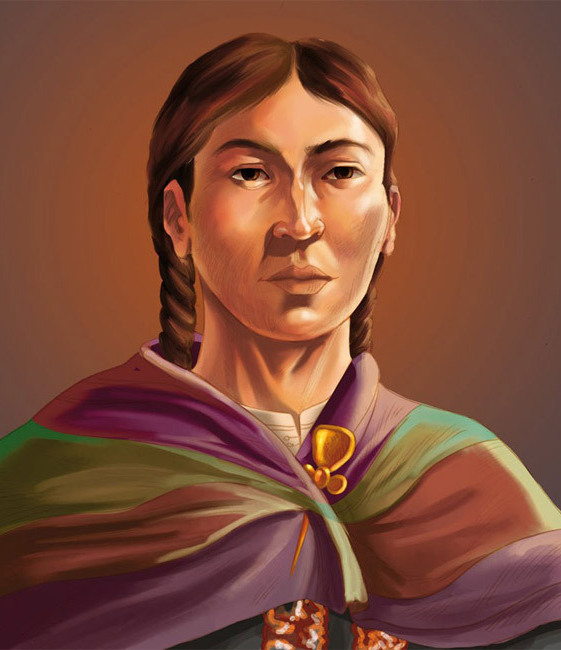
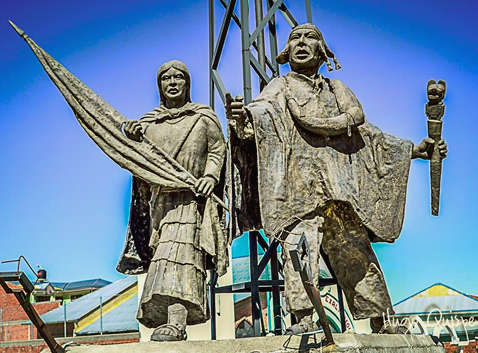
Bartolina Sisa; statue of Sisa and Tupac Katari in El Alto, Bolivia
Bartolina Sisa, an Aymara woman, fights side by side with her husband, the leader Túpac Katari, and his sister Gregoria Apaza. They lead an army of 40,000 in an Indigenous rebellion against the Spanish colonialists in upper Peru (today Bolivia), laying siege to the city of La Paz for 184 days in 1781. Only after more colonial troops arrive from Lima and Buenos Aires do they retreat. Sisa and Katari are betrayed and captured. Sisa is brutally tortured but never gives up any information. After being forced to witness her husband being publicly drawn and quartered, she is put to death in a similarly gruesome fashion by the colonial authorities less than a year later on September 5, 1782. Her head and limbs are then put on display in various Indigenous villages as a warning to others. In Bartolina Sisa's honour, September 5 is recognized as International Day of the Indigenous Woman.
 Micaela Bastidas |
Micaela Bastidas is an advisor to her husband, the Inca independence leader Tupac Amaru II as well as a revolutionary leader in her own right. She commands a battalion of insurgents and is known as a daring and superior military strategist. In 1781, after a failed uprising, she is captured by the Spanish and executed in a public square, along with her husband and one of their sons, for rebellion.
| |
A revolution of enslaved plantation labourers in Saint-Domingue (now Haiti) begun in August 1791 forces France to legally abolish slavery in its colonies less than three years later. By 1802, however, Napoléon’s forces seek to resurrect the sugar-based economies of Saint-Domingue, Guadeloupe, and other French holdings in the Caribbean by re-enslaving freed people who have been living as French citizens for eight years. Africans and their descendants fiercely resist French forces -- successfully in Saint-Domingue, unsuccessfully in Guadeloupe. Solitude is celebrated as a heroine in Guadeloupe for her role in that struggle for lasting freedom in 1802.
Solitude joins the maroon settlement of La Goyave in the mid-1790s, and during an attack by French General Desfouneaux, she becomes the leader of a small group that escapes to the hills of Guadeloupe, eluding capture. On May 5, 1802, French ships arrive in Pointe-à-Pitre carrying troops ready to enforce Napoléon’s decree to reinstate slavery on the islands. Battles erupt as Africans and their descendants, including Solitude and her followers, fight to preserve their freedom. The maroon rebels, outnumbered by French troops, decide to make one last stand by letting the French advance into their territory before blowing up stores of gunpowder, thereby killing themselves together with hundreds of French soldiers. Solitude and a number of others survive and are captured and sentenced to death by a French military tribunal. Because she is pregnant at the time, Solitude is not to be hanged until after the birth of her child, as her child will become the property of a slave owner. The morning after giving birth, according to accounts Solitude steps out of jail peacefully while maternal milk stains her nightshirt. "Live free or die" are her last words before being hanged, becoming a martyr and symbol for all women and mothers who have sacrificed themselves and fought against all odds to defend the ideals of freedom and equality. Almost 200 years later a statue is placed on Héros aux Abymes Boulevard in Guadeloupe in her memory.
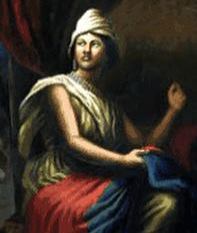
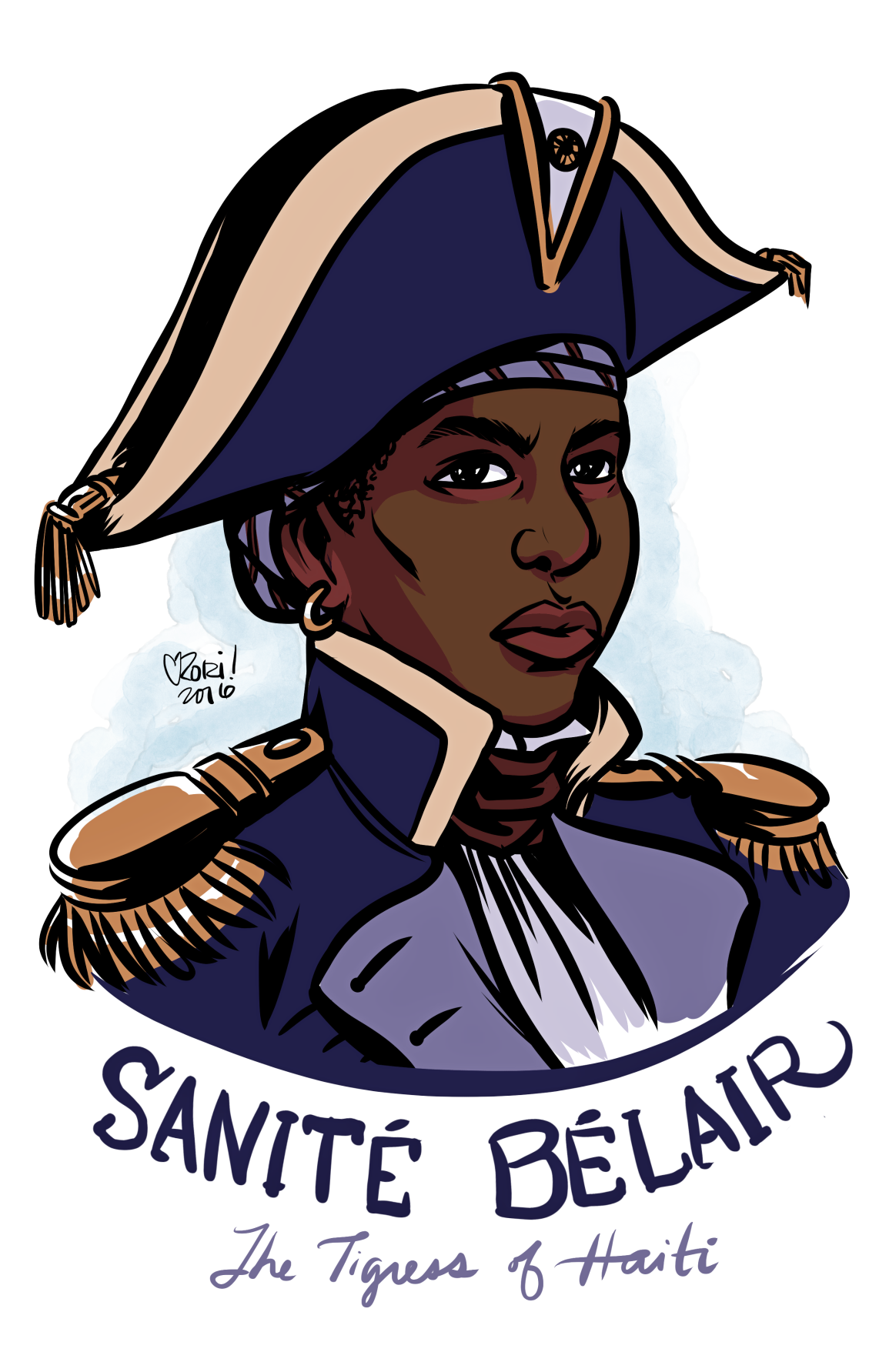

Catherine Flon, Sanité Bélair and Cecile
Fatiman in Haiti played important roles in the anti-colonial struggle.
Women play a central role in all aspects of the Haitian Revolution -- organizing other slaves to refuse life-threatening work; as practitioners of spiritual rituals which inspire others to the cause of freedom; through intelligence work and combat against the French. Shortly after Haiti wins its independence and throws off the yoke of slavery there is a surge against the Spanish in the colonies they have established. Women also play crucial roles in these rebellions, including as leaders in combat, and display exemplary bravery.
| |
Juana Azurduy de Padilla, is a guerrilla fighter who alongside her husband, Manuel Ascencio Padilla, battles for Bolivian independence. She is noted for her strong support for and military leadership of the Indigenous people of Upper Peru, earning the rank of Lieutenant Colonel. Azurduy was known for inspiring Indigenous peoples, and other women, known as the Amazonas, to join the cause. During an 1815 battle at Pintatora, she leaves the battlefield to give birth to her fourth son, returning hours later to the front lines to rally her troops, and personally captures the standard of the defeated Spanish forces.
Policarpa "La Pola" Salavarrieta
In Colombia, Policarpa "La Pola" Salavarrieta is a brave and effective spy for the revolutionary forces, reporting on the loyalist forces and turning their soldiers to the cause of independence. She is captured in 1817 at 22 years of age and sentenced to death for high treason. Her hands bound, La Pola walks to her death accompanied by two priests. Instead of repeating the prayers they entreat her to recite to save her soul, she curses the Spaniards and predicts their coming defeat. Her last words before the firing squad are defiant ones to rally her comrades-in-arms: "I have more than enough courage to suffer this death and a thousand more. Do not forget my example." La Pola is a national hero of Colombia. The anniversary of her death, November 14, is celebrated as the official Day of the Colombian Woman.
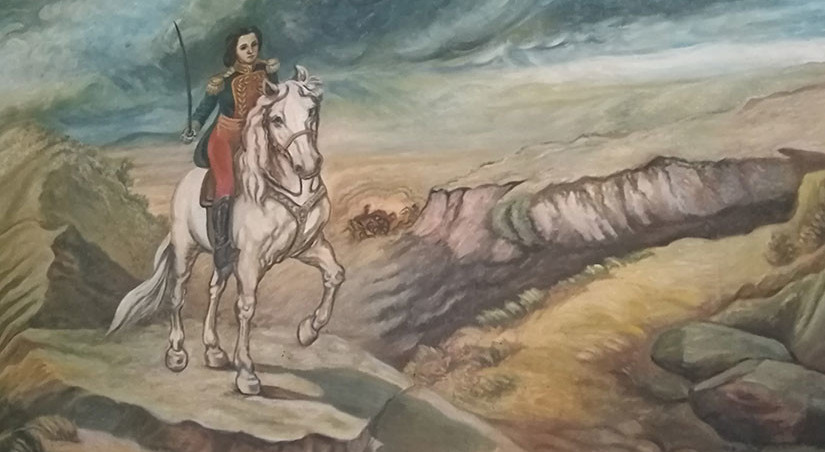
Manuela Sáenz
Ecuadorean-born revolutionary heroine Manuela Sáenz
joins her companion, the Liberator Simón Bolívar,
on the battlefield in the 1820s and plays an important political role
during the wars to liberate New Granada (today Venezuela, Colombia and
Ecuador) from Spanish colonial rule.
 Maria Andrea Parado de Bellido |
Maria Andrea Parado de Bellido, a Peruvian Indigenous revolutionary, passes information to patriot forces to aid in their fight against Spanish royalists. Captured and brought before a firing squad in 1822, she rejects a last minute offer by her captors to spare her life if she informs on her collaborators, declaring "I am not here to give you information, but to sacrifice myself for the cause of freedom." In 1925 a statue was erected in her honour in the place where she was executed.
Mural honours Gertrudis Bocanegra’s sacrifice for Mexican independence in public square named after her in Morelos, Michoacán, Mexico
Gertrudis Bocanegra joins the Mexican war of Independence (1810-1821) during its earliest days. She is a messenger who helps form a communications network between the principal locations of the rebellion. She is captured in 1817 and subjected to torture to reveal the names of other rebels, which she steadfastly refuses to do, and is executed for treason by a firing squad.

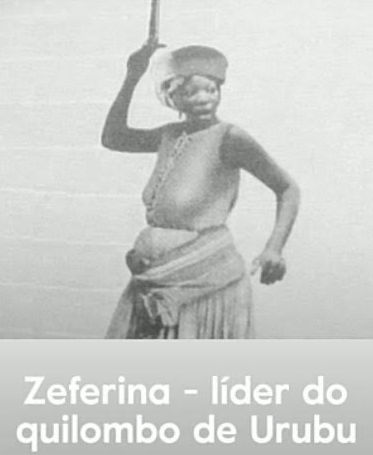
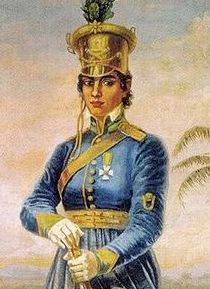
Zacimba Gaba; Zeferina; Maria Quitéria de Jesus
Zacimba Gaba, an Angolan princess, provokes a revolt of the enslaved people in the state of Espírito Santo against the Casa Grande and leads a quilombo where she is queen. For years she commands attacks on slave ships, appearing in the middle of the night in precarious straits to rescue the enslaved Africans. She dies during one such confrontation.
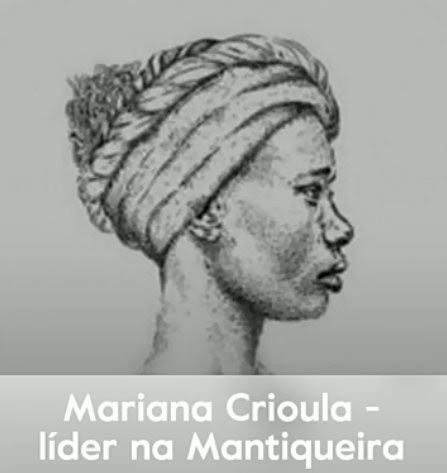 Zeferina, the leader of the
quilombo of Urubu in Bahia, was brought as a child to Brazil from
Angola. Zeferina leads a revolt against the capitães-do-mato
(captains of the forest, mercenaries) in 1826. Stories relate how she
confronts them with a bow and arrow.
Zeferina, the leader of the
quilombo of Urubu in Bahia, was brought as a child to Brazil from
Angola. Zeferina leads a revolt against the capitães-do-mato
(captains of the forest, mercenaries) in 1826. Stories relate how she
confronts them with a bow and arrow.
Maria Quitéria de Jesus from Bahia, Brazil fights in the War of Independence against Portugal (1822-24) in a man’s uniform. She is promoted to Lieutenant and decorated with the Imperial Order for her bravery and skills and is recognized as a national heroine of her country.
Mariana Crioula, a mucama (female slave) in Vila das Vassouras, Rio de Janeiro, together with her husband Manuel Congo, leads the largest slave revolt in Rio de Janeiro on November 5, 1838 and then forms a quilombo with him.
Juana Saltitopa
Juana de la Merced Trinidad (1815-1860), better known as Juana Saltitopa, a Dominican activist and military woman, is recognized as a symbol of female heroism for her efforts during the War of Independence.
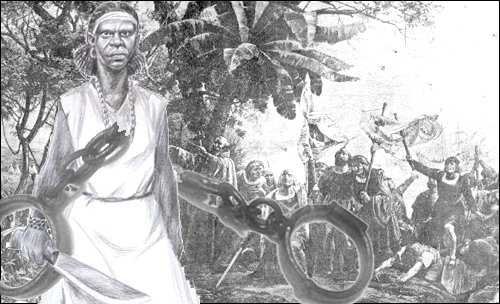
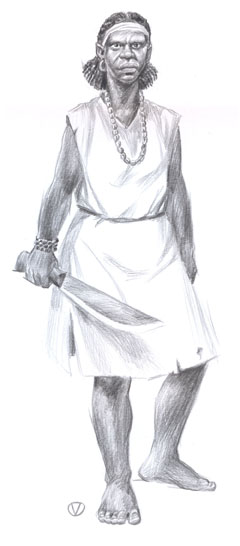 Carlota, an enslaved slave
woman of Yoruba origin brought from Angola, takes up the machete on
November 5, 1843 to lead a heroic uprising at the Triumvirato sugar
mill in Matanzas Province of Cuba. The great plain of Havana-Matanzas
is the emporium of the slave-owning oligarchy, given the wealth of its
land and the profusion of the sugar-cane industry. Cuba's slave
population increases from about 39,000 in 1774 to about 436,000 by
1841, when slaves form 45 per cent of the population. In the 19th
century, more than 600,000 Africans are brought to the island as slaves.
Carlota, an enslaved slave
woman of Yoruba origin brought from Angola, takes up the machete on
November 5, 1843 to lead a heroic uprising at the Triumvirato sugar
mill in Matanzas Province of Cuba. The great plain of Havana-Matanzas
is the emporium of the slave-owning oligarchy, given the wealth of its
land and the profusion of the sugar-cane industry. Cuba's slave
population increases from about 39,000 in 1774 to about 436,000 by
1841, when slaves form 45 per cent of the population. In the 19th
century, more than 600,000 Africans are brought to the island as slaves.
Carlota and her captains, according to their secret plan, go from Triunvirato to the Arcana sugar plantation to liberate their enslaved brothers and sisters, particularly Fermina who was very active in an earlier rebellion. Fermina and others are liberated but Carlota was captured during an unequal battle and brutally murdered.
The uprising has international repercussions. A few days after the rebellion begins, the Vandalia, a U.S. Navy corvette, appears in the port of Havana under the command of Rear-Admiral Chauncey, the bearer of an "official" letter from the Spanish Business Attaché in Washington, which notifies Captain General O'Donnell that he can count on the aid of the United States to crush the "Afrocuban" rebellion, a document that Commander Chauncey, accompanied by a Mr. Campbell, the U.S. consul in Havana, presents to the colonial governor in an official ceremony with full diplomatic rigour.
In her honour, her name is given to Cuba's 1980s Operation Carlota in Southern Africa, which culminates in the battle of Cuito Cuanavale and the defeat of the racist and fascist South African army in pitch battle.
Monument to Carlota's Rebellion
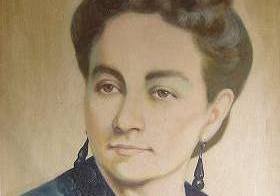 Ana Betancourt |
Ana Betancourt, a fighter for Cuban independence, in 1869 addresses the Constitutional Assembly of Cuban patriots at Guáimaro and declares on the occasion of the proclamation of Cuba's first insurgent, anti-colonial constitution: "Citizens: the Cuban woman waited patiently and resigned in the dark and quiet corner of her home for this sublime hour, for a just revolution to break her yoke and unleash her wings. [...] You have destroyed slavery based on colour by emancipating the slave. The time has come to liberate the woman!"
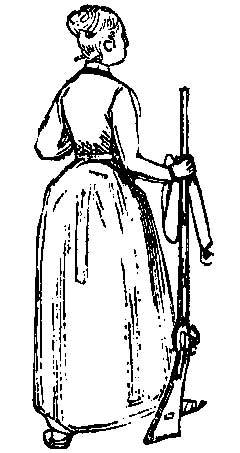 1837-38: Women take
their place alongside men in the Rebellion of 1837 to establish the
nation of Quebec and fight British colonial rule.
1837-38: Women take
their place alongside men in the Rebellion of 1837 to establish the
nation of Quebec and fight British colonial rule.
Women like Emily Boileau-Kimber play a crucial role at public meetings in the spring of 1837, prior to the Rebellion. Other notable women include Julie Papineau, wife of Louis-Joseph Papineau, leader of the Patriot Party. She is a political person in her own right and takes part in founding a committee of Patriot women. When the armed struggle begins, women help to cast the bullets and manufacture gunpowder cartridges.
| |
Madame Masson and Madame Dumouchel, among the most ardent of the Patriots, design and weave the first Quebecois flag, planted by St. Eustache fighters in December 1837. The women are renowned for their outstanding compassion in treating all casualties of the conflict, regardless of the side they are on. Emile Gamelin becomes known for providing aid to political prisoners and captured rebels.
| |
In the United States Sojourner Truth is an African American abolitionist and women's rights activist born into slavery in New York State as Isabella Bomfree in 1797. She is sold at auction at the age of nine and then twice more. She escapes with her infant daughter in 1826, takes the name Sojourner Truth and devotes her life to the abolition of slavery, political rights for women and prison reform. She is best known to some for a speech she delivers on racial and gender inequalities at the Ohio Women's Rights Convention. One of the foremost leaders of the abolitionists, she insists that the abolitionist community must fight for civil rights for black women as well as men. Almost 100 years before the civil rights movement in the U.S., in 1865 Truth attempts to force the desegregation of streetcars in Washington, DC, by riding in cars designated for whites.
| |
Born
around 1822, Harriet Tubman is an African American abolitionist who
escapes slavery and the brutal treatment that left her with a permanent
head injury and partly deaf and becomes known as the most famous
"conductor" on the Underground Railroad, the secret network of safe
houses used to bring fugitives from slavery north. She returns to the
south year after year to act as a guide to people escaping slavery. She
is never caught despite the $10,000 reward offered for her capture.
During the Civil War she works for the Union Army as a cook and nurse,
and an armed scout and spy. The first woman to lead an armed expedition
in the war, she guides the Combahee River Raid in June 1863, which
liberates more than 700 slaves in South Carolina. After the war Tubman
joins the work for women's suffrage. When she dies at the age of 93 she
is buried with military honours at Fort Hill Cemetery in Auburn, New
York.
| |
Mary Ann Shadd Cary, born in 1823 in Delaware, is an anti-slavery and women’s rights activist and the first black woman to found a newspaper in North America. In 1850 when the U.S. Congress passes the Fugitive Slave Law aimed at discouraging assistance to fleeing slaves and ordering their arrest, Shadd moves to Canada, quickly joined by the rest of her family. In 1858, her father Abraham becomes the first black man elected in Canada, winning a seat as a councillor in Ontario’s Raleigh Township. In Windsor, Shadd creates a racially integrated school, committed to the idea of fighting racism through education. She also founds and edits a weekly anti-slavery newspaper, The Provincial Freeman. It is the first newspaper to give a voice to African-Americans. She publishes it until 1861 in Southern Ontario. After the Civil War, Shadd returns to the U.S. where she becomes the second African American woman to obtain a law degree and joins the National Woman Suffrage Association, campaigning alongside Susan B. Anthony and Elizabeth Cady Stanton.
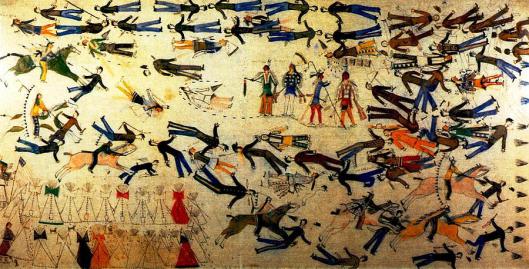
Battle of Little Big Horn as depicted by Kicking Bear.
1864-1879: Notable events for the Cheyenne are the Sand Creek Massacre of 1864, and the Battle of Washita River in 1868. Both times, ostensibly peaceful Cheyenne settlements are attacked by the United States Army. Outnumbered and outgunned, several hundred Cheyenne die in these two battles -- mostly civilians, elderly and children.
Some accounts of Sand Creek in particular tell the story of Mo-chi, a woman who fights off a rapist, helps bring survivors to safety among their northern relatives, and becomes a warrior after the Sand Creek Massacre.
Buffalo Calf Road Woman
A series of battles take place, later known as the Great Sioux War. Among the Cheyenne, the Battle of Rosebud is known as The Battle Where the Girl Saved Her Brother. Muts-i-mi-u-na of the Tsitsistas -- Buffalo Calf Road Woman -- saves her wounded brother Me'enonehne'e -- Chief Comes In Sight. Her bravery motivates the rest of the Cheyenne to victory. Later that year, she fights along with her husband Black Coyote in the famous "Battle of Little Bighorn." Northern Cheyenne oral tradition credits her with knocking Custer off his horse before he dies at Little Bighorn. For her actions at the Rosebud and Little Bighorn, Buffalo Calf Road Woman earns a new name, Brave Woman.
| |
Accounts tell that a Sioux named Fast Eagle holds Custer down while another Sioux, Tȟašína Máni -- Moving Robe Woman, stabbs him. Another woman who fights Custer's army, Minnie Hollow Wood, earns the right to wear a war bonnet because of her bravery at the battle. Ehyophsta -- Yellow Haired Woman -- also a member of the Elk Scraper Society also fights there.
| |
The heroics of two more women at the Battle of Rosebud bear mention: Osh-Tisch, whose name translates to Finds Them and Kills Them, and The Other Magpie, both Crow women who fiercely defend their people on the battlefield. In the late 1890s, Osh-Tisch is imprisoned by an agent of the U.S. government. The Crow Nation rallies around Osh-Tisch and demands the agent be fired, and he is removed shortly after. Osh-Tisch dies in 1929.

Apache warrior Lozen
Lozen
was born c. 1840 and died on June 17, 1889 to the Chihenne Chiricahua
Apache. She was the sister of the famour war chief Victorio. According
to the legends, Lozen was able to use her powers in battle to
learn the movements of the enemy. The name Lozen is an Apache war
title, meaning one who has stolen horses in a raid.
(With files from TML Archives, HBRC Archives, Wikipedia, Peoples' Dispatch, Global Research, ww2today, Unesco, Redfish, Upworthy.com, Allthatisinteresting.com , Nellie McClung Foundation: Catherine Cleverdon. The Woman Suffrage Movement in Canada. Toronto: 1950 University of Toronto Press, p. 50 The Country Homemakers," The Grain Growers' Guide, (November 19, 1913), p. 10)
(To access articles individually click on the black headline.)
Website: www.cpcml.ca Email: editor@cpcml.ca
